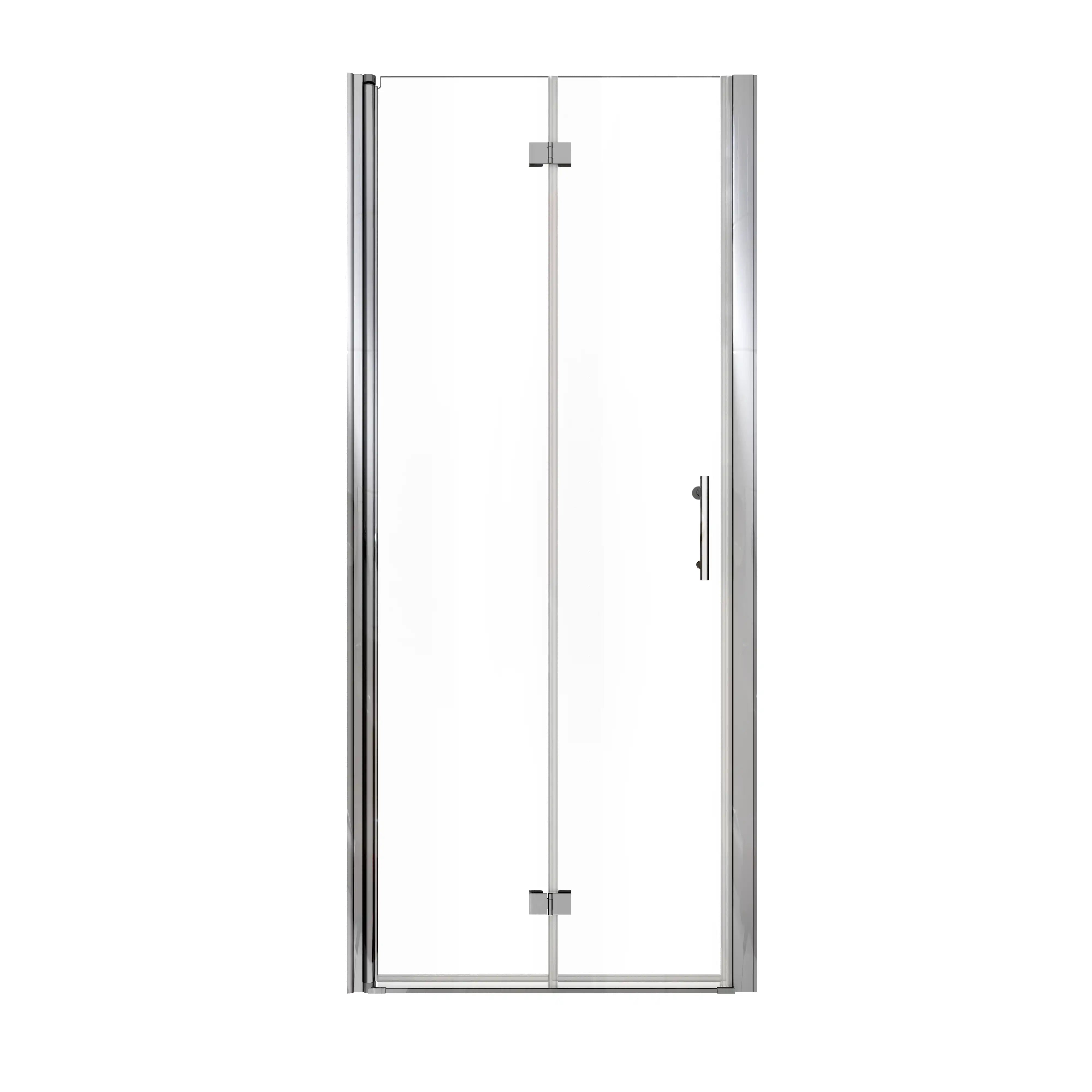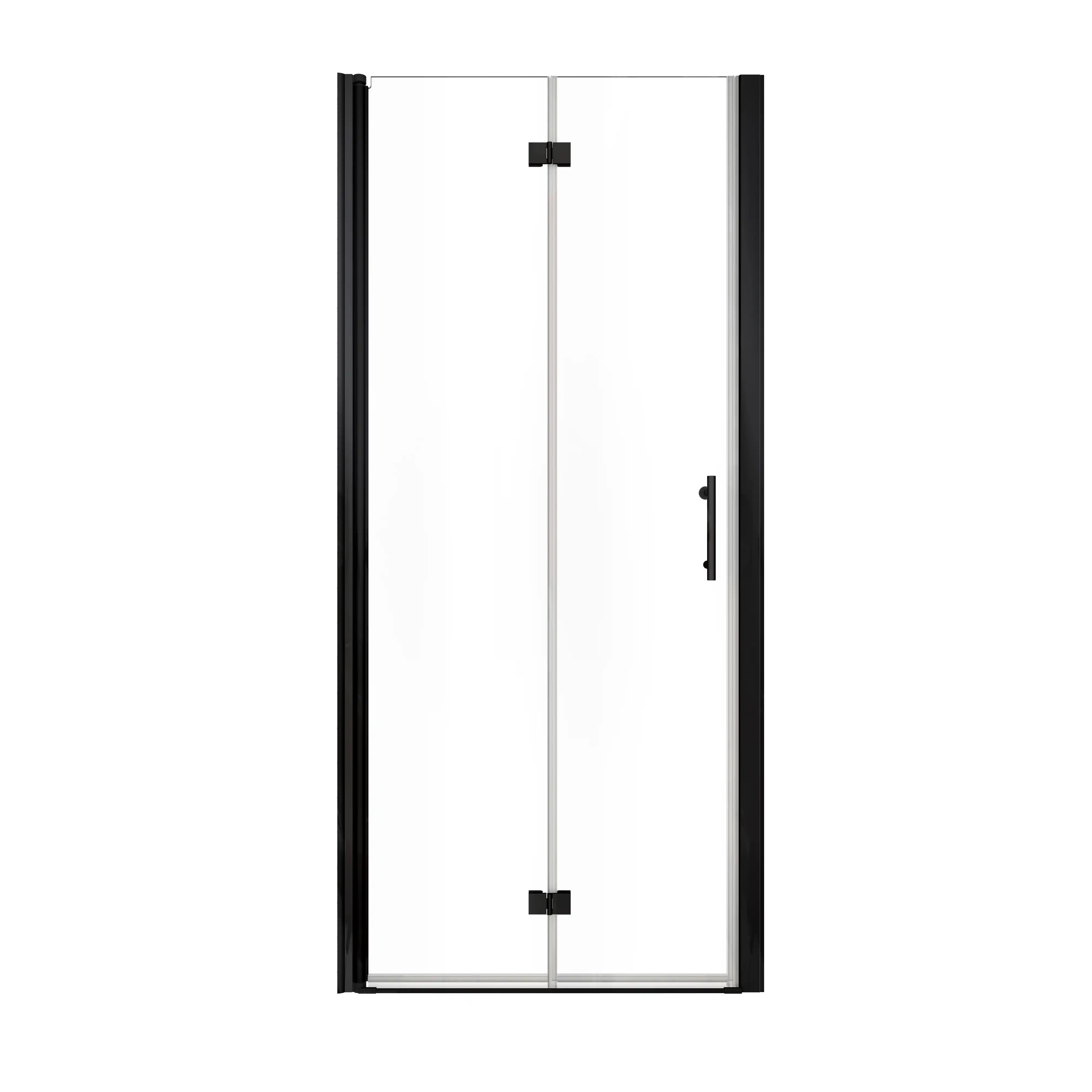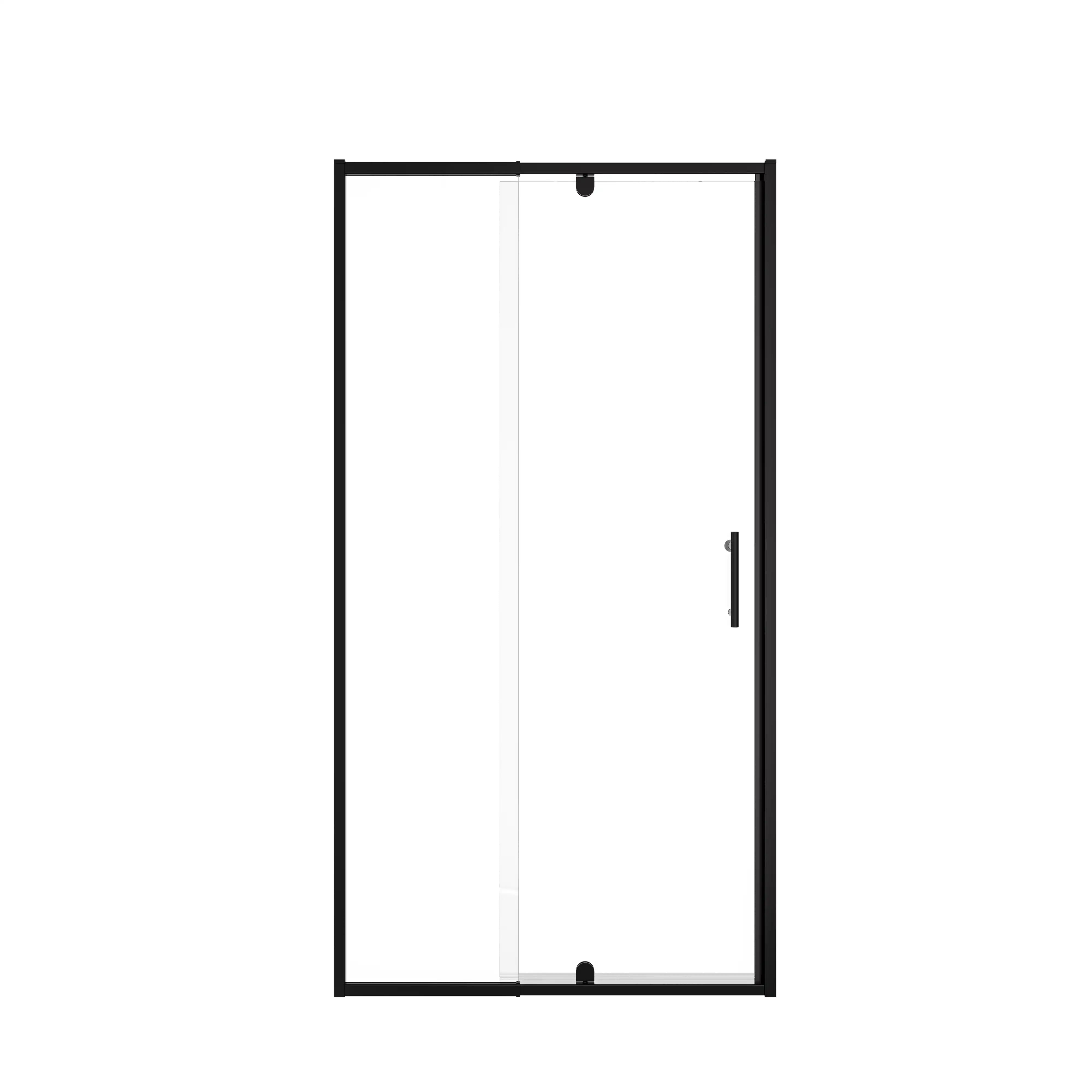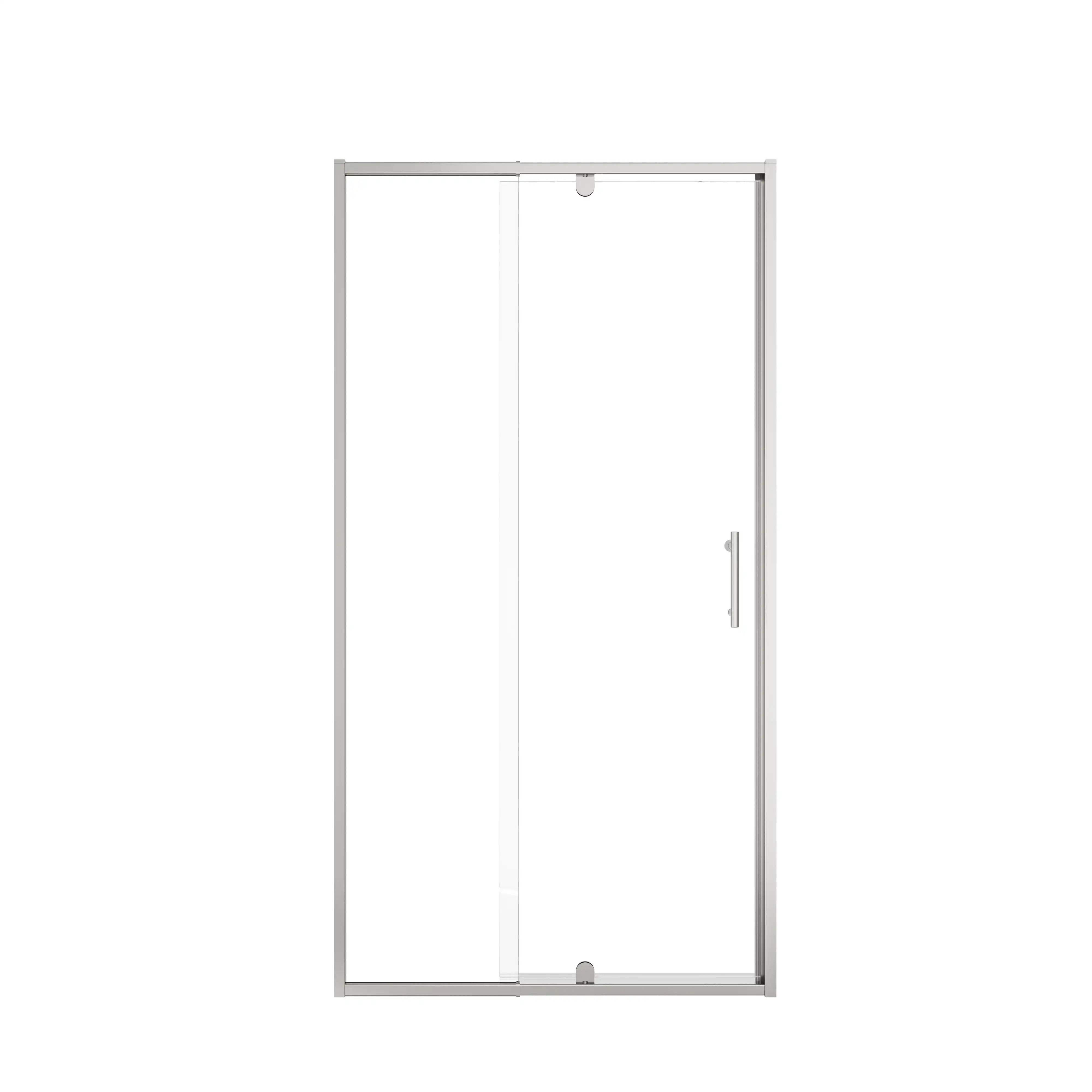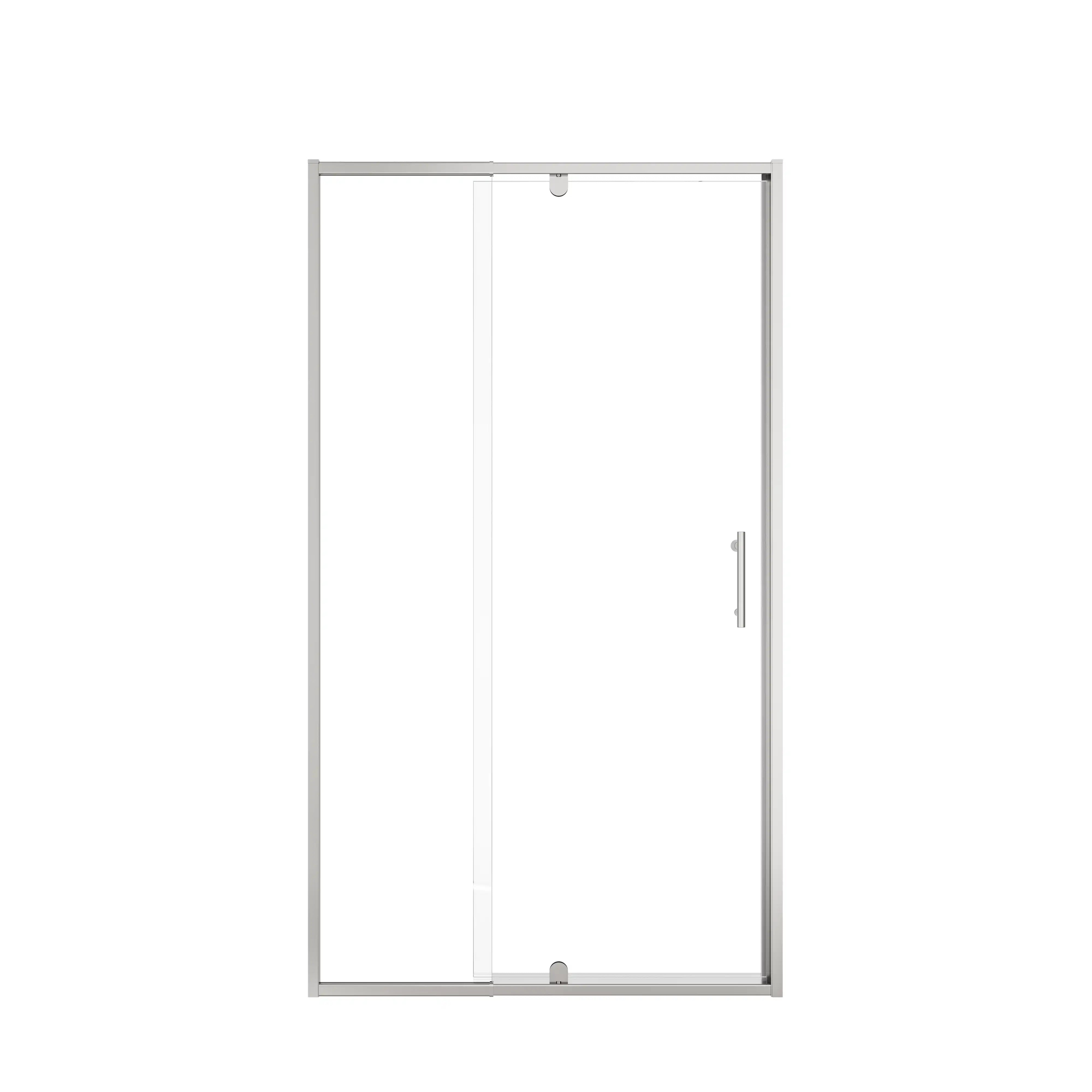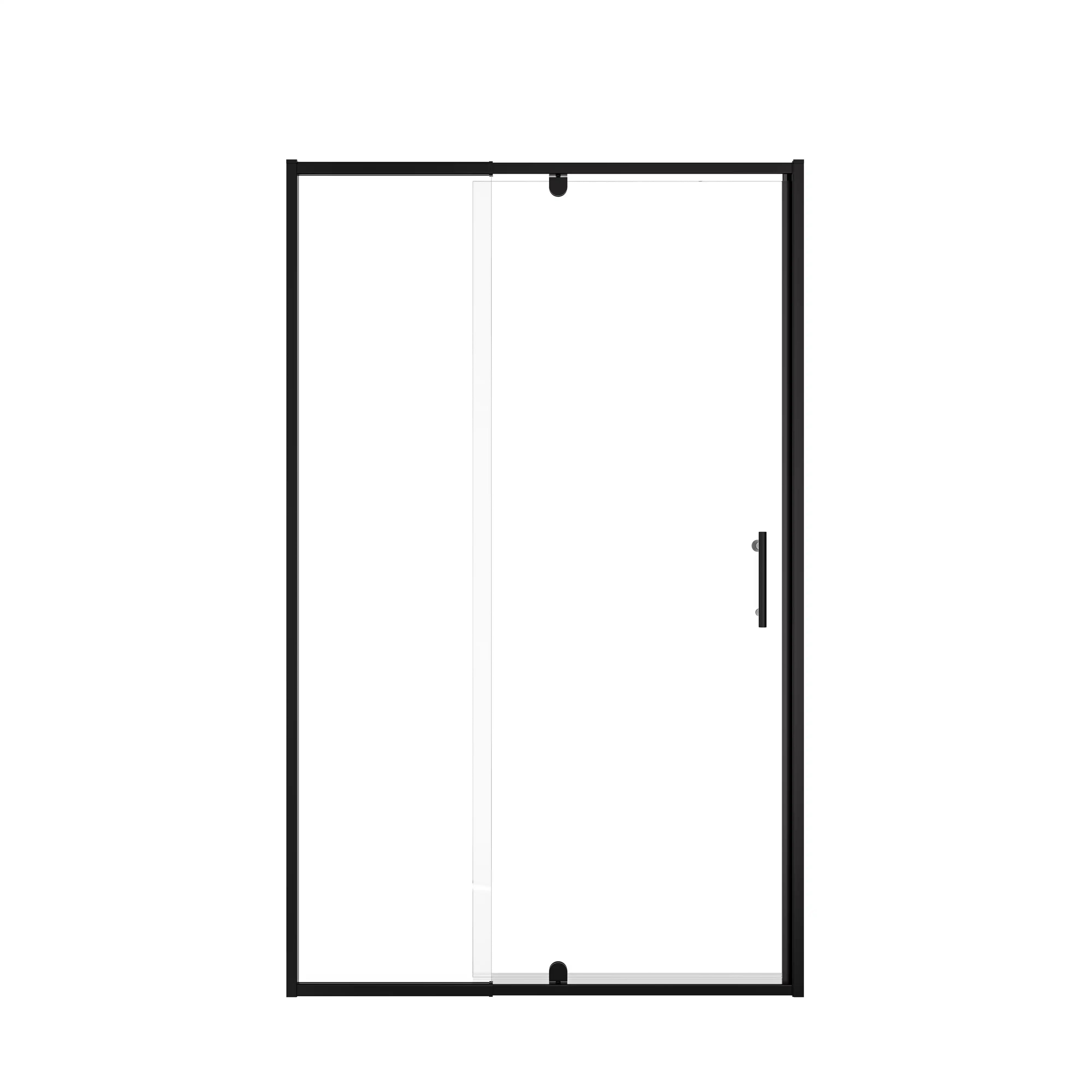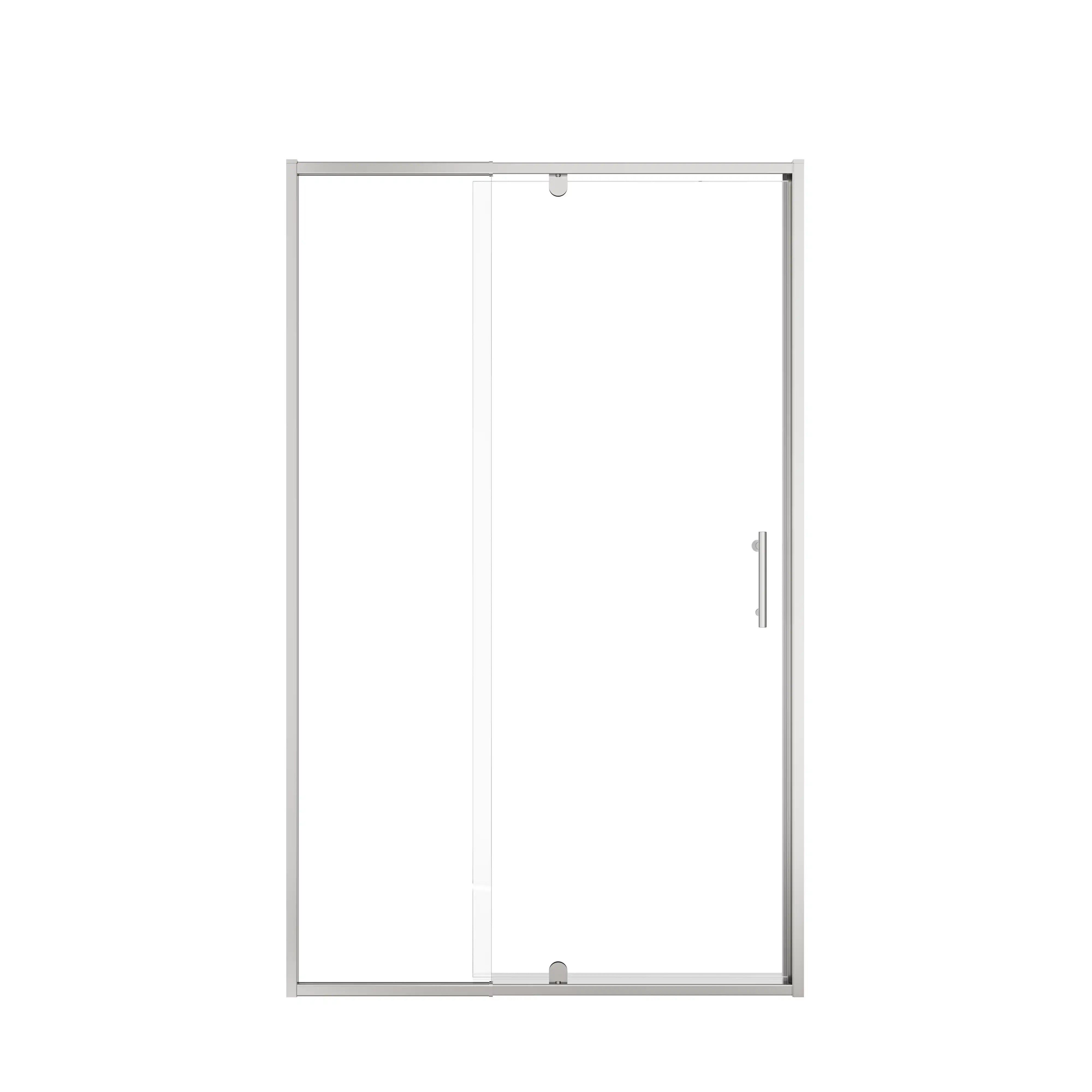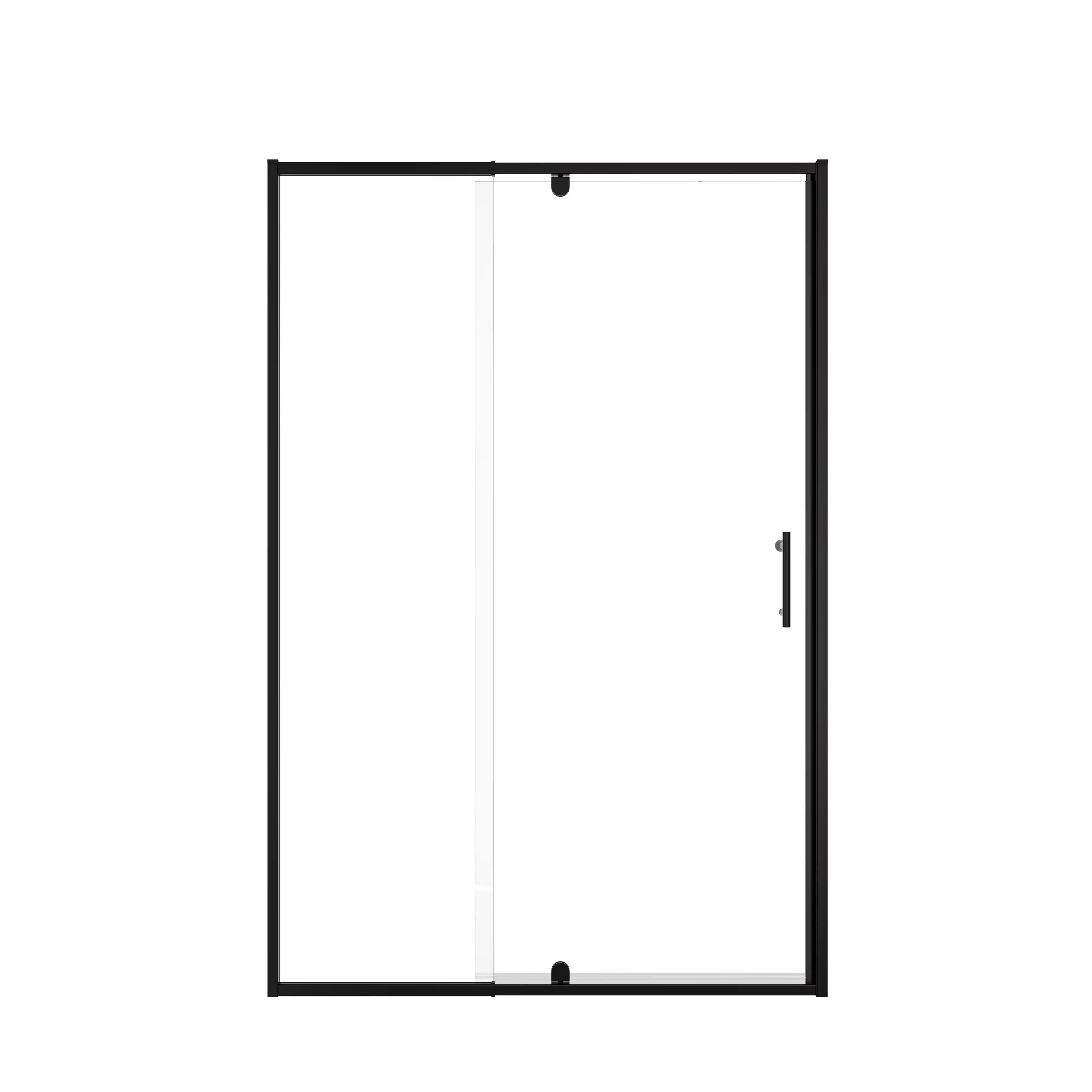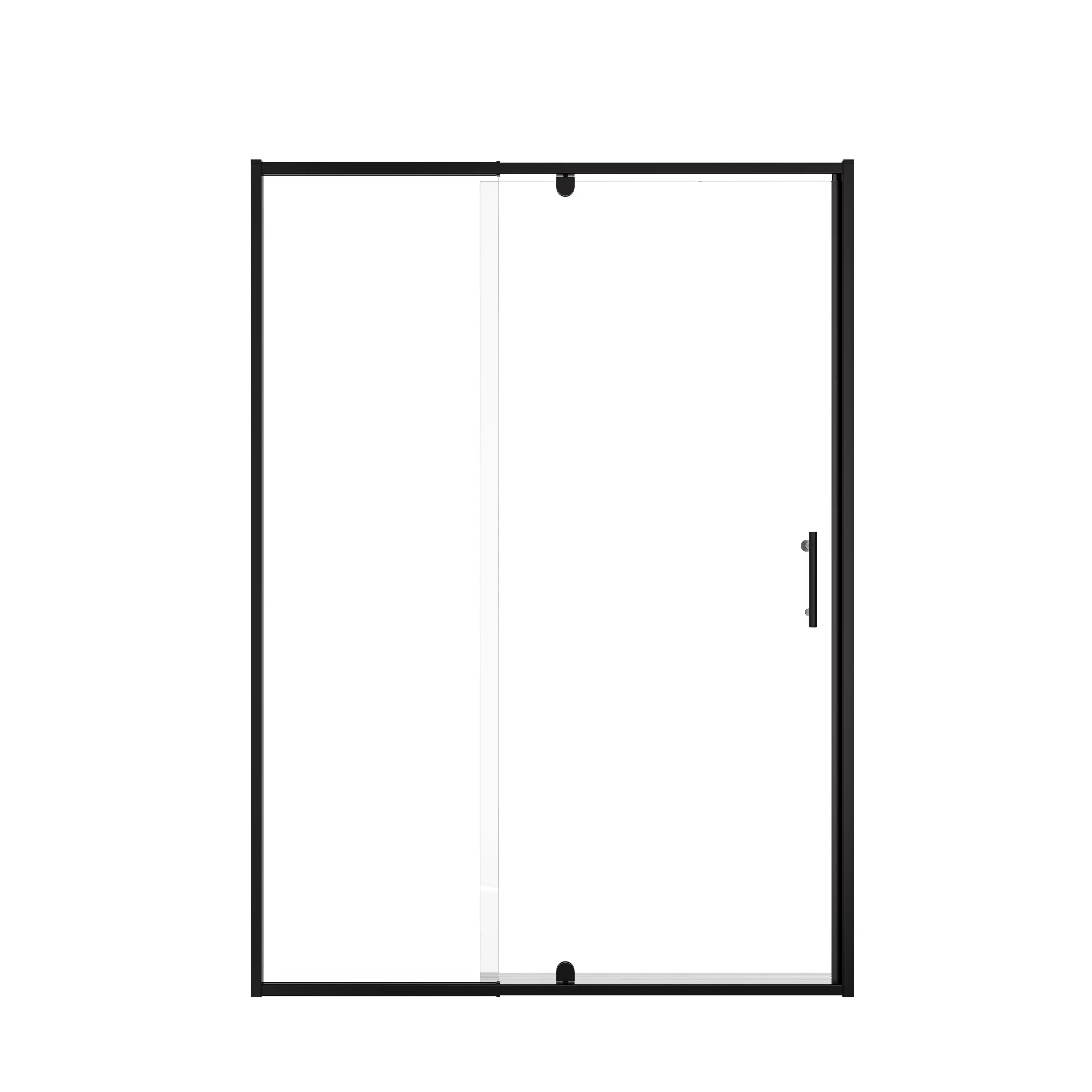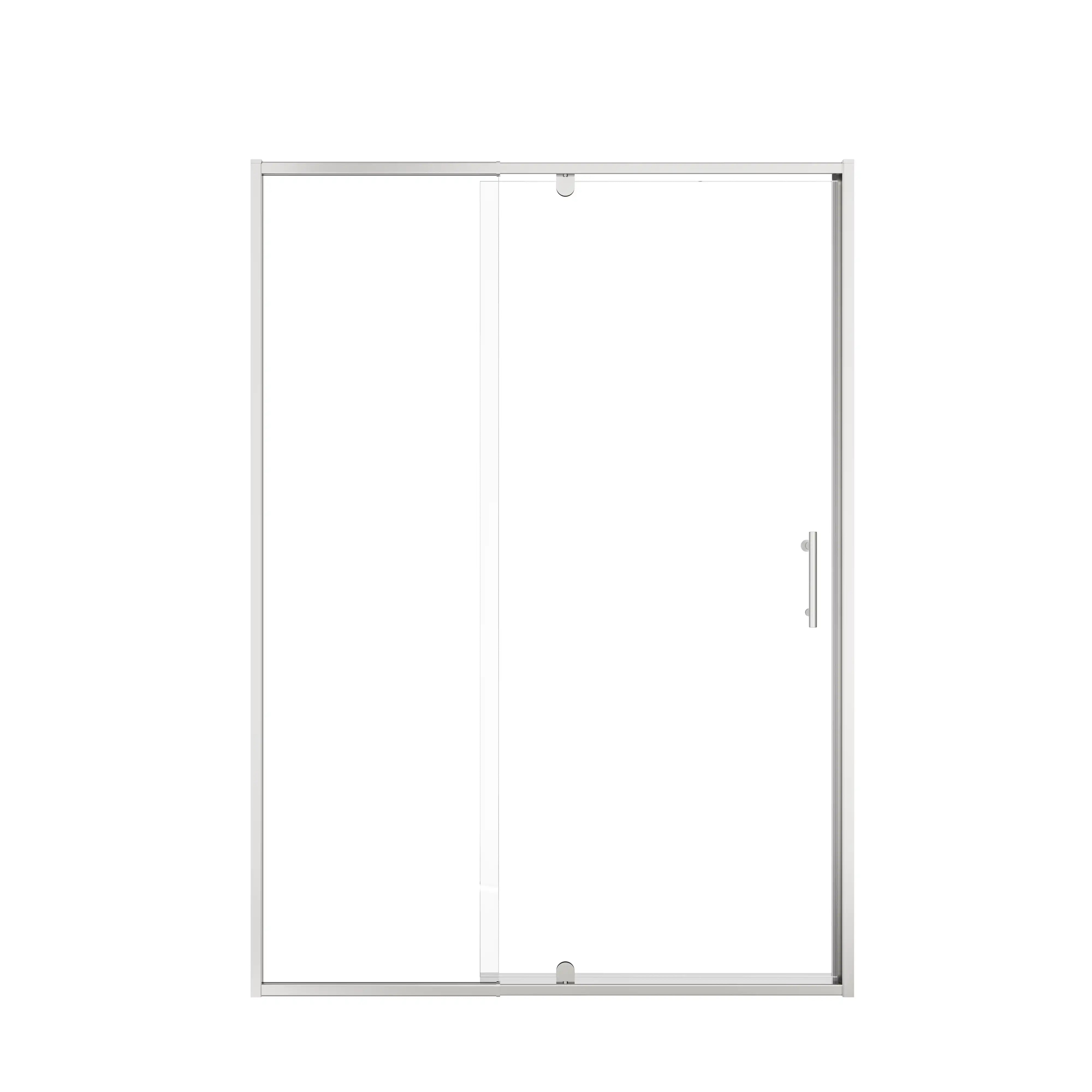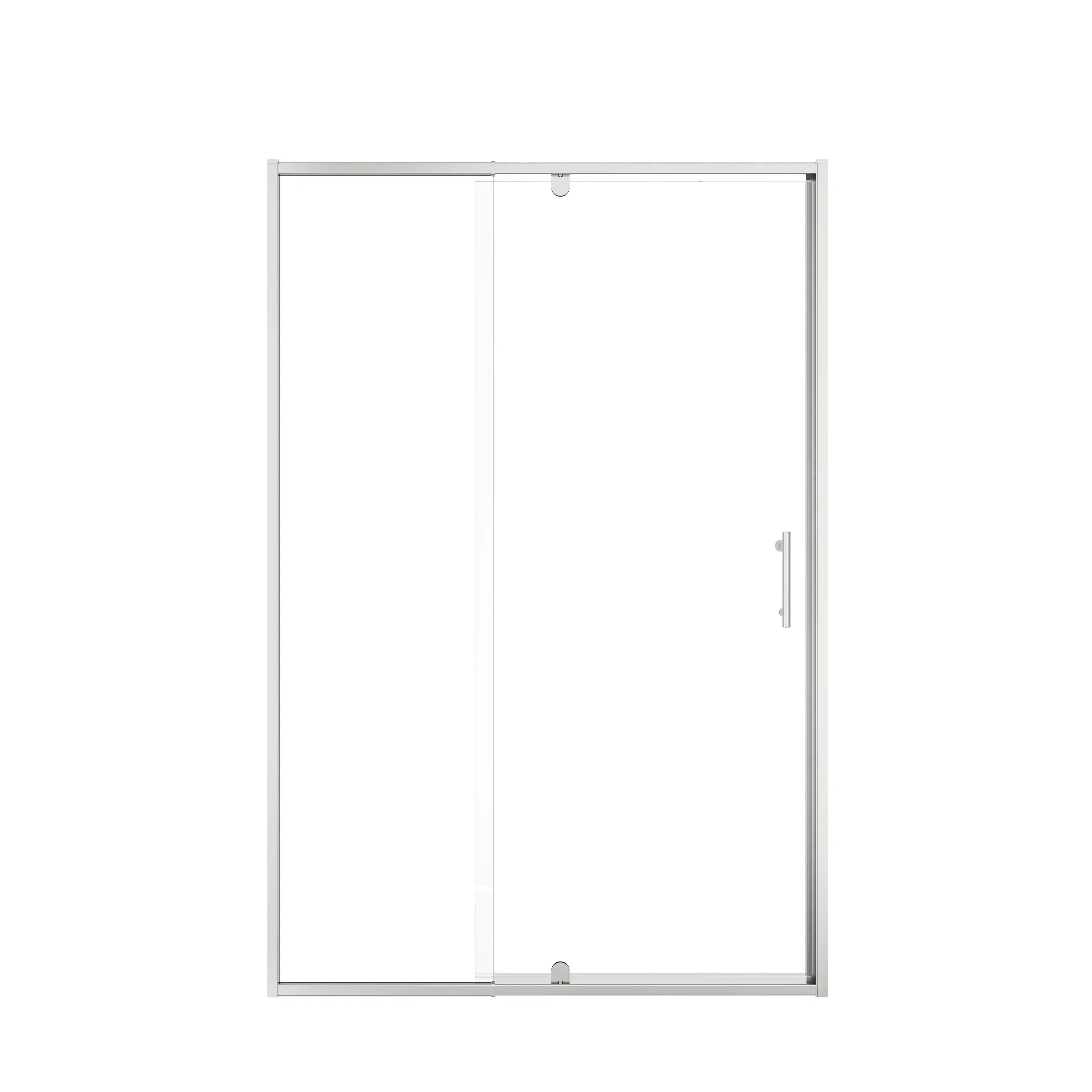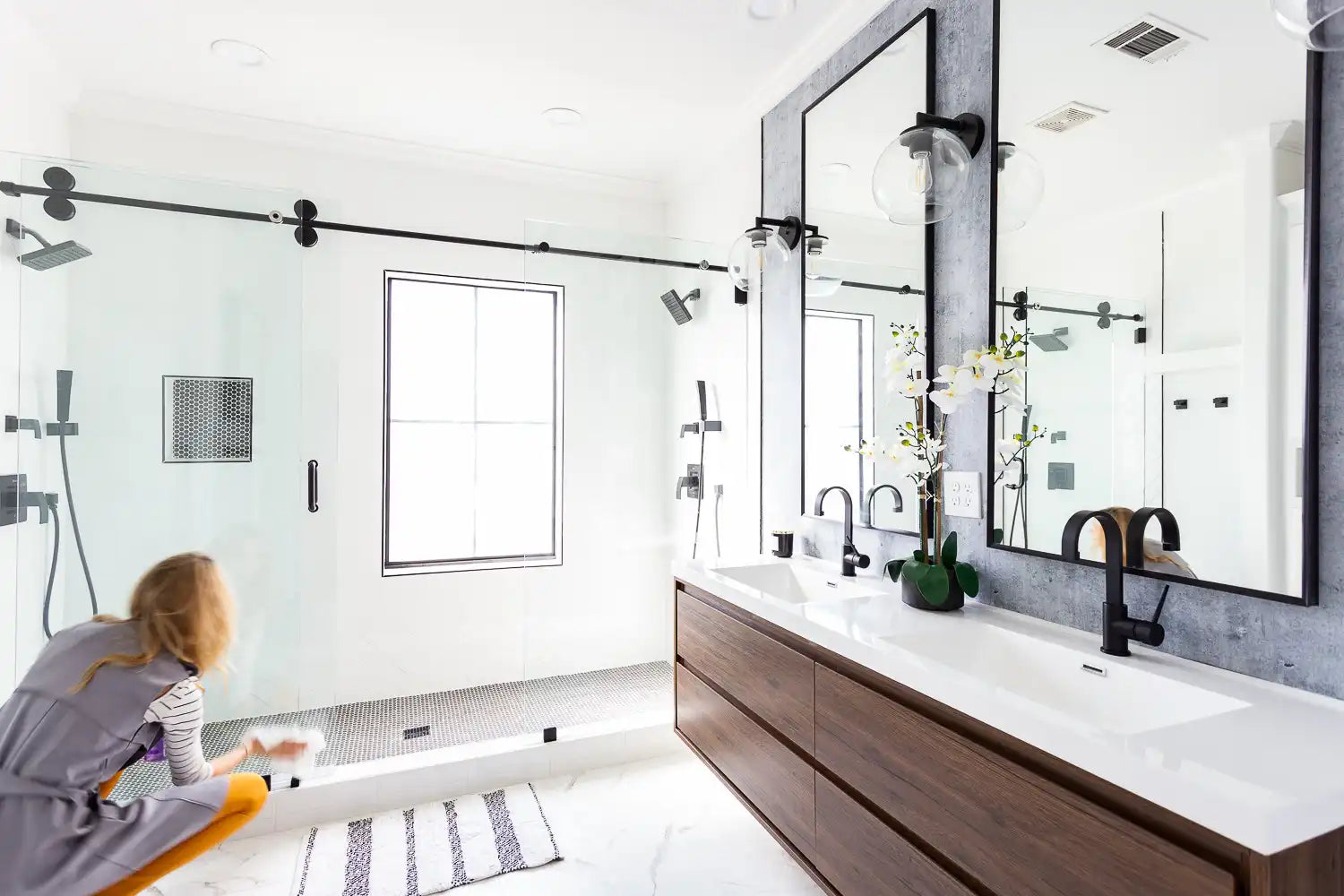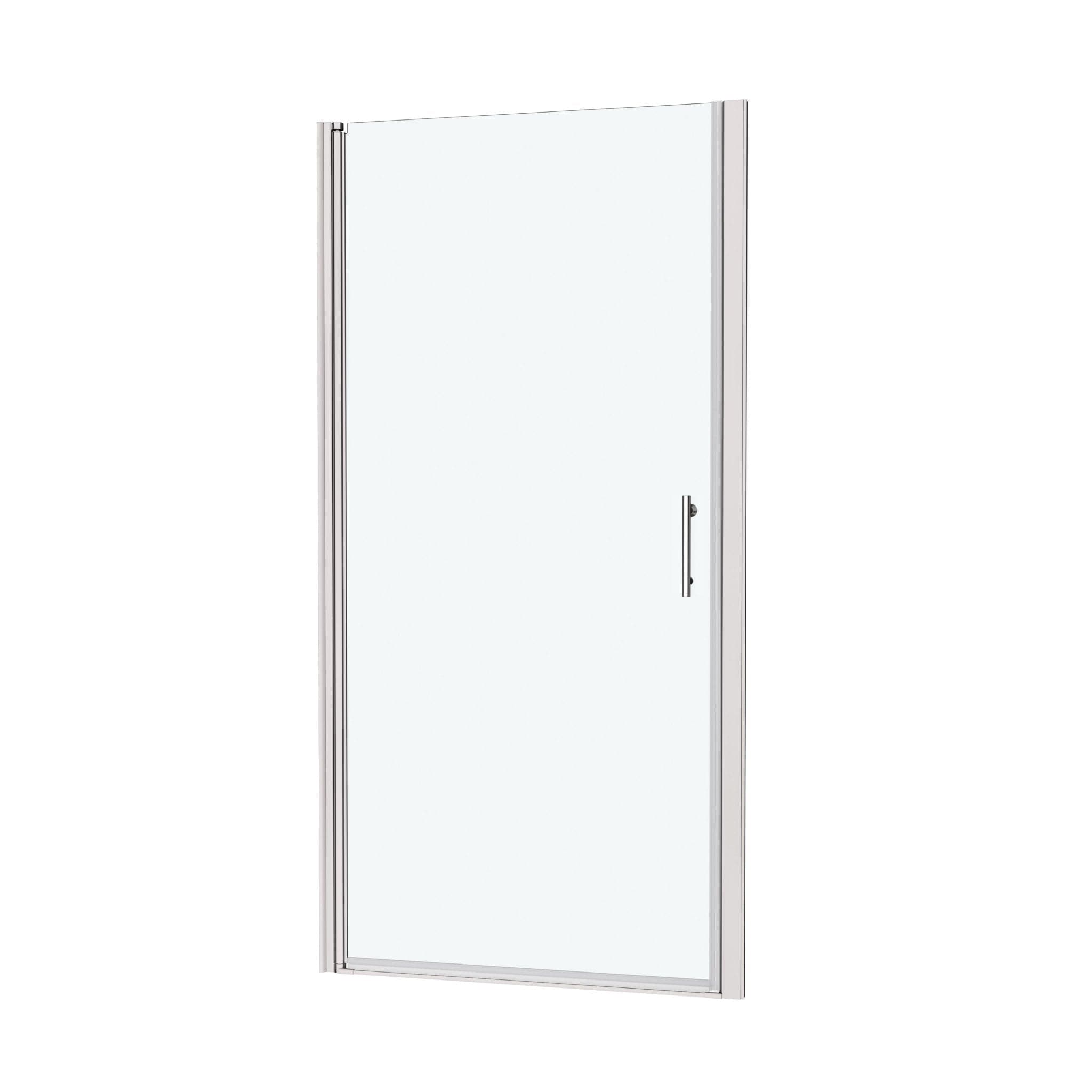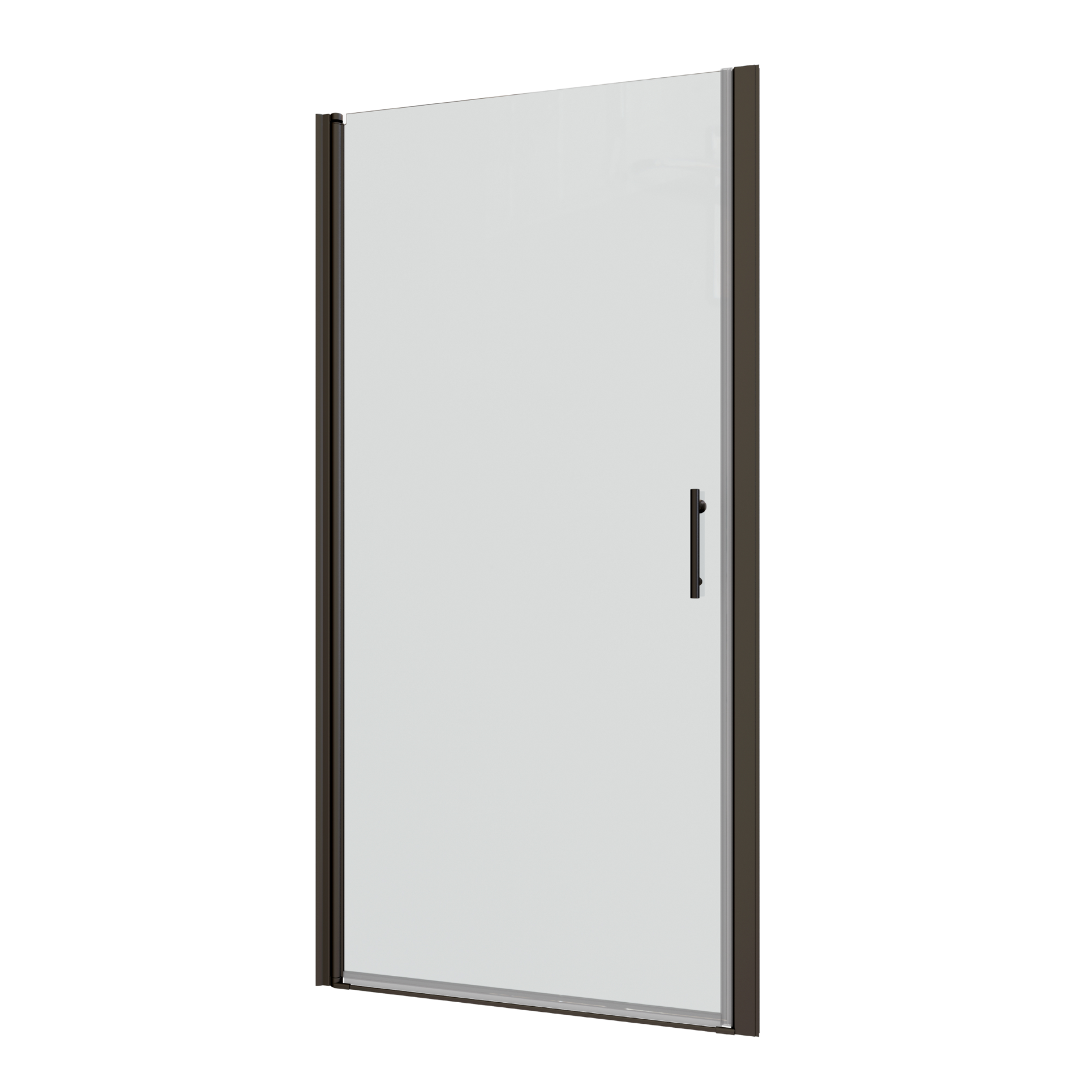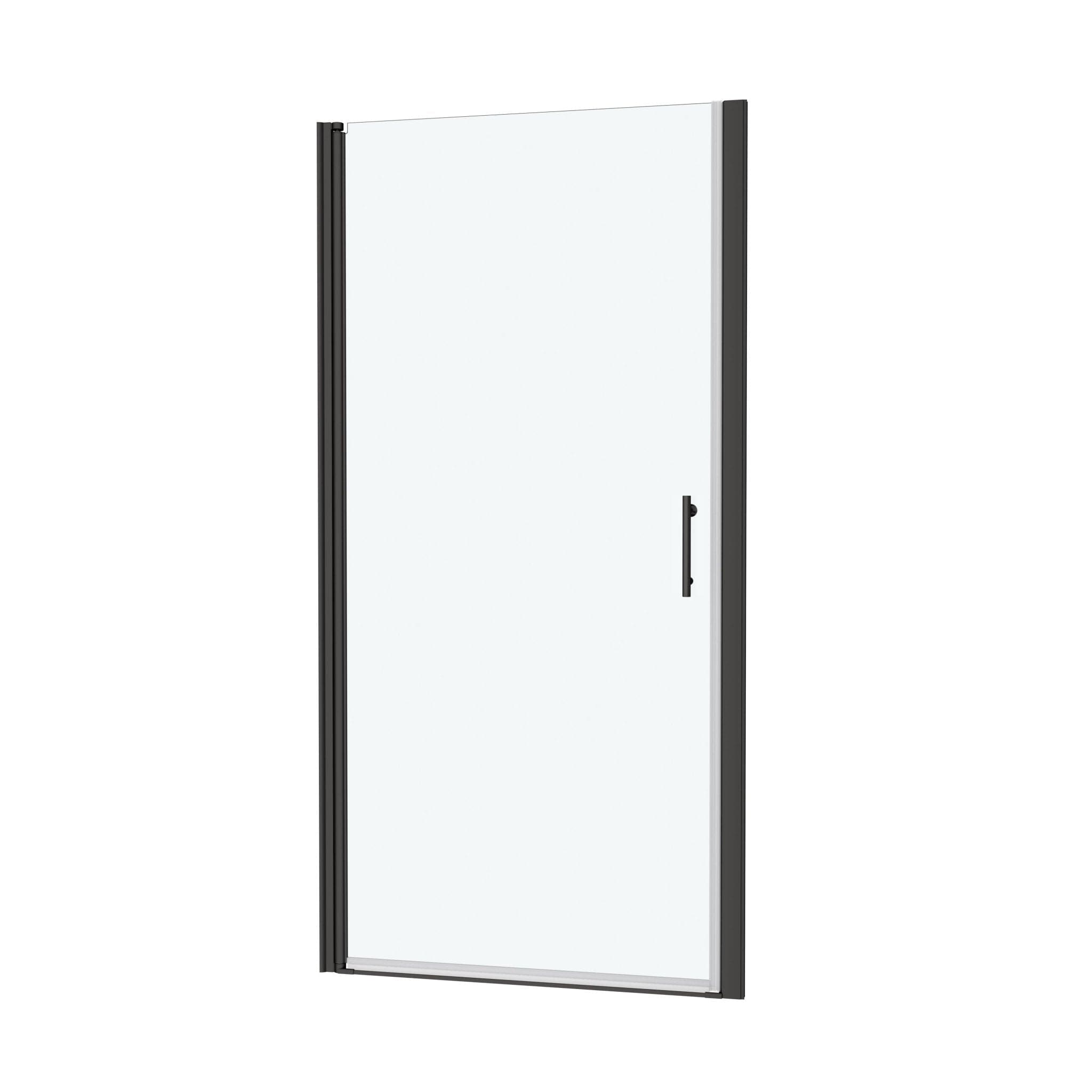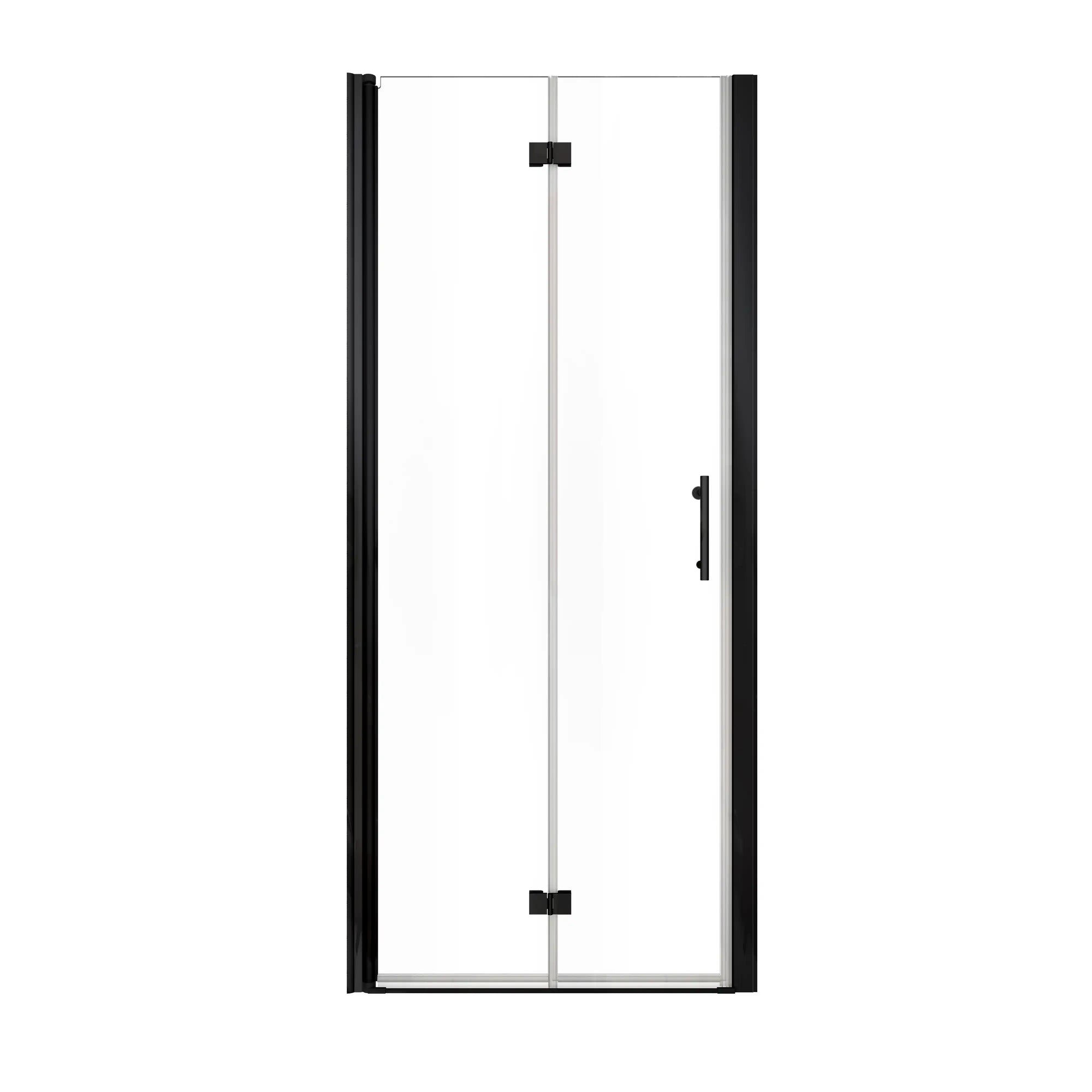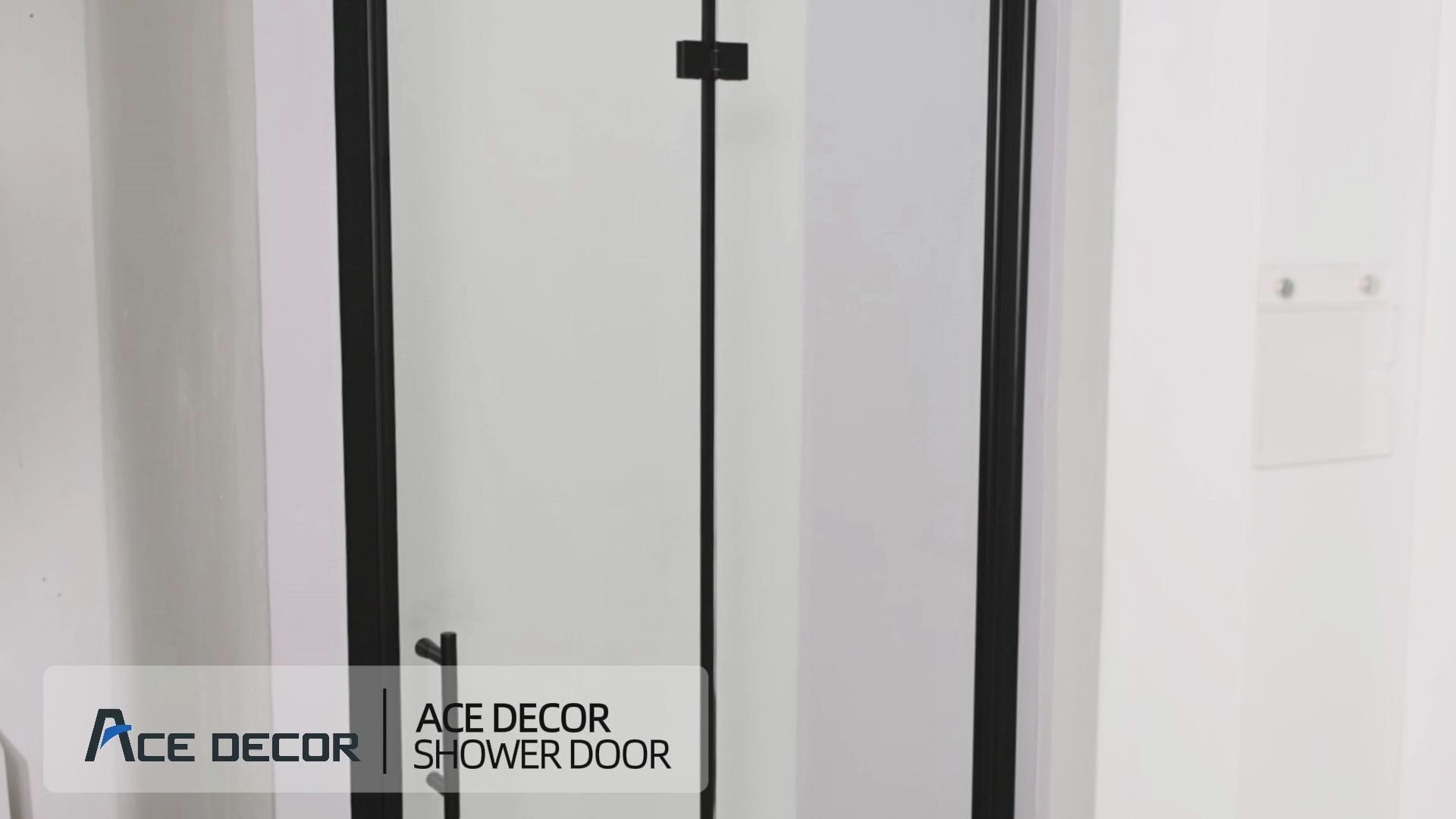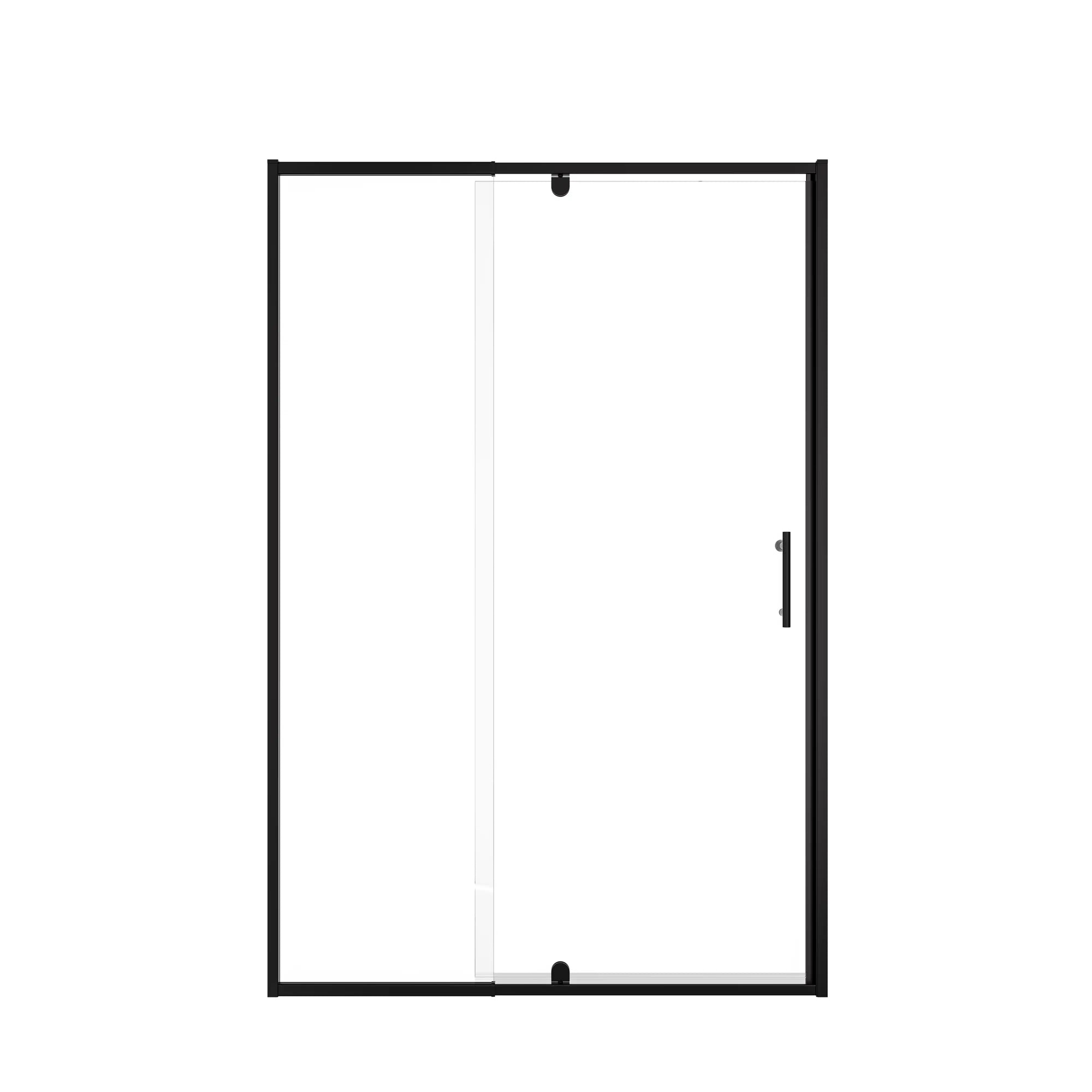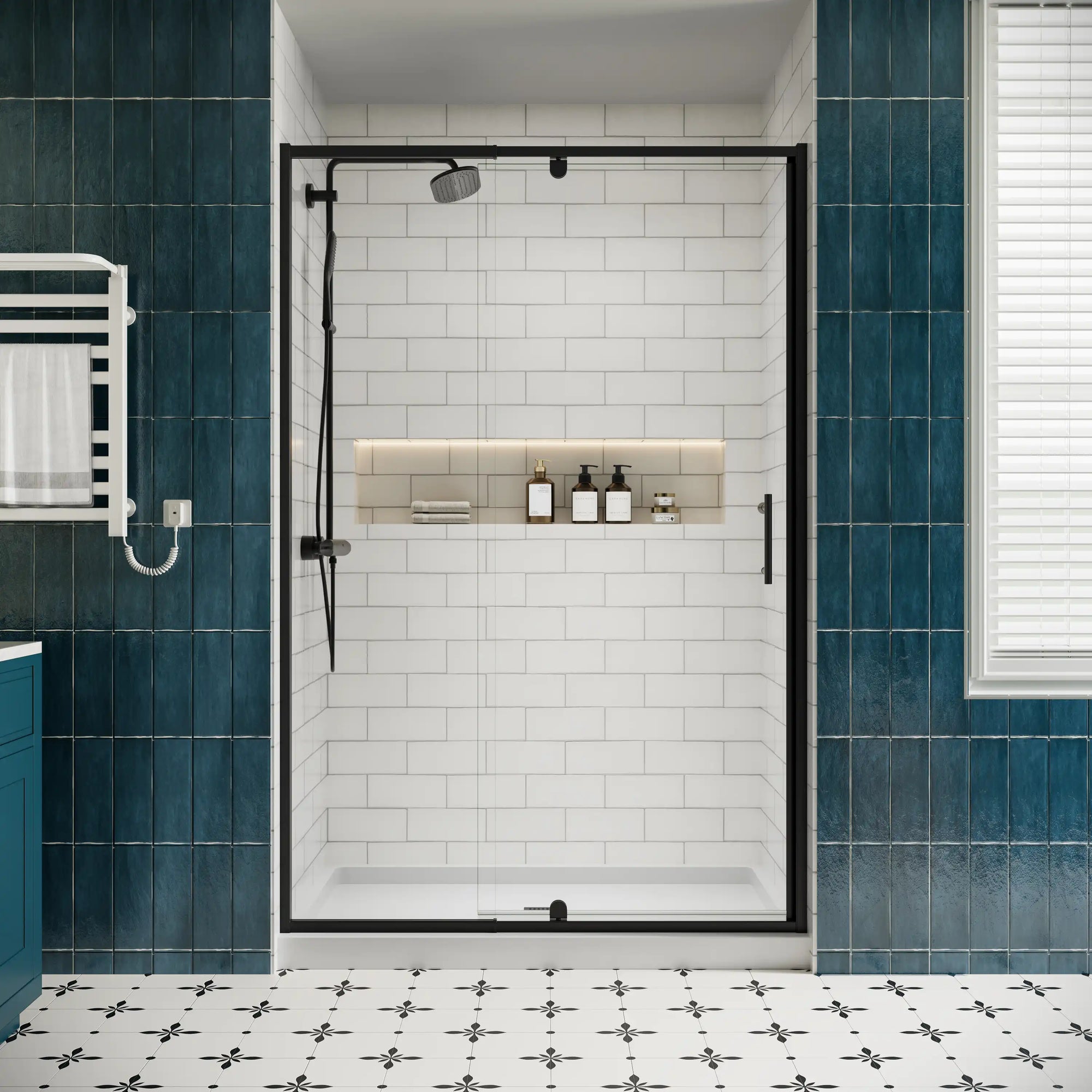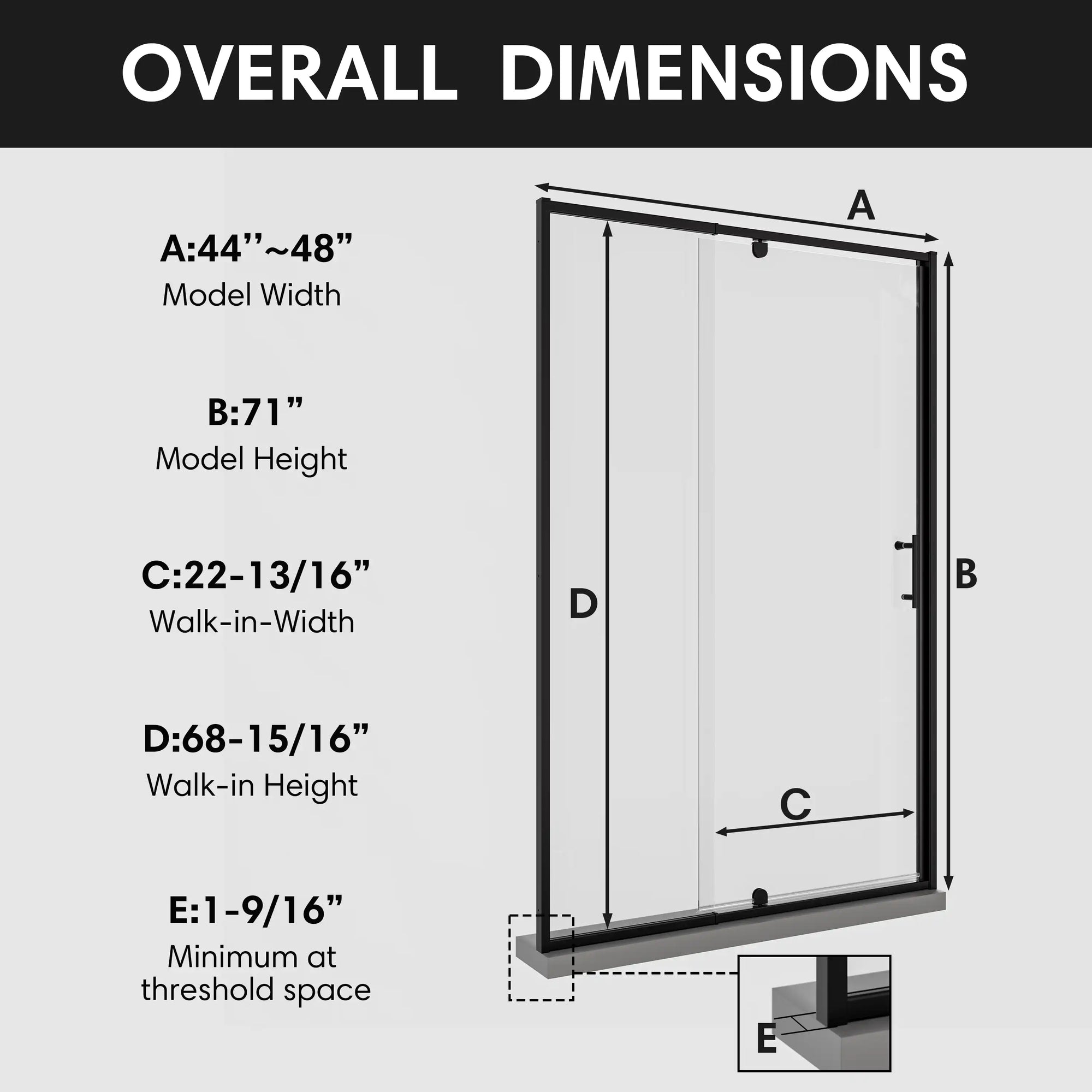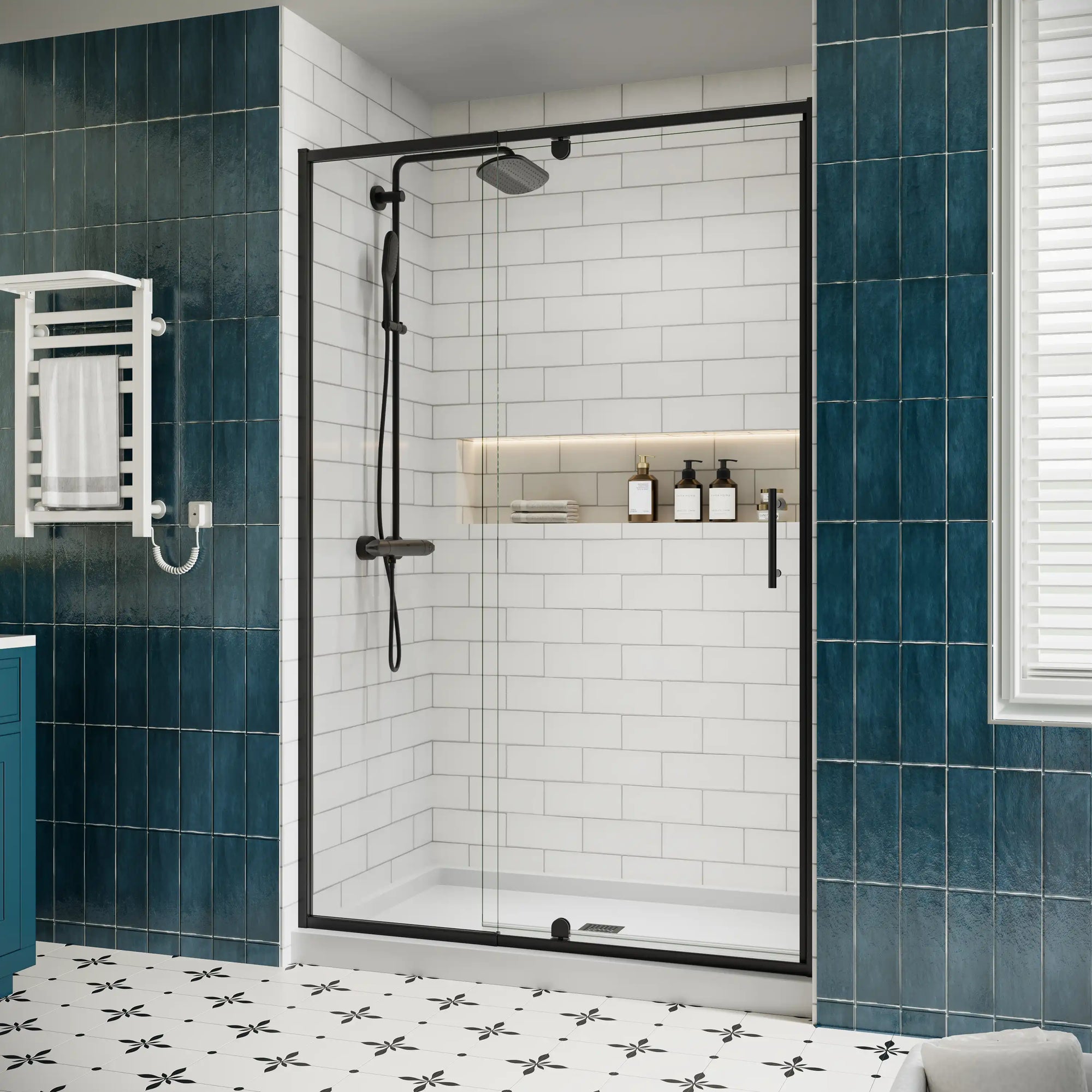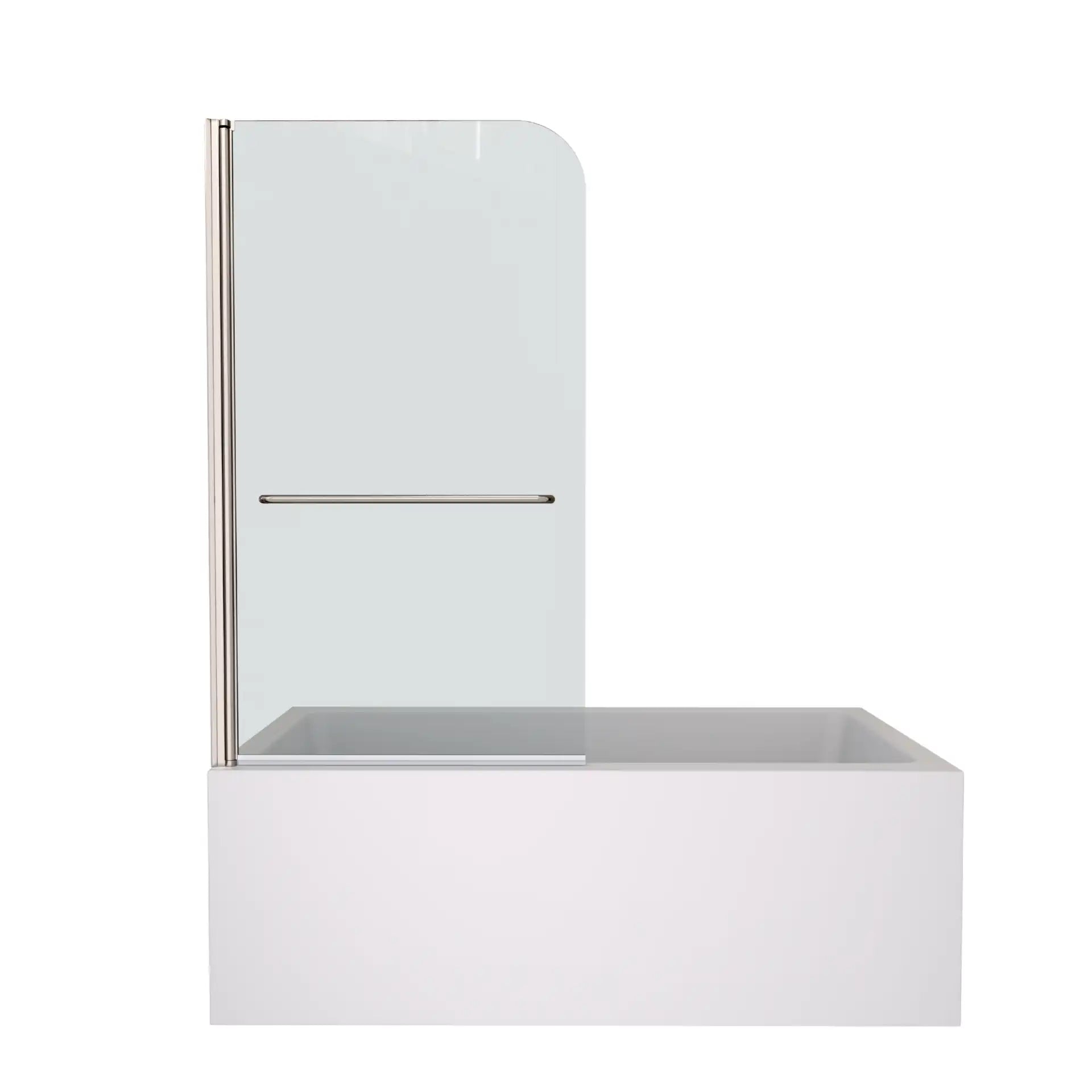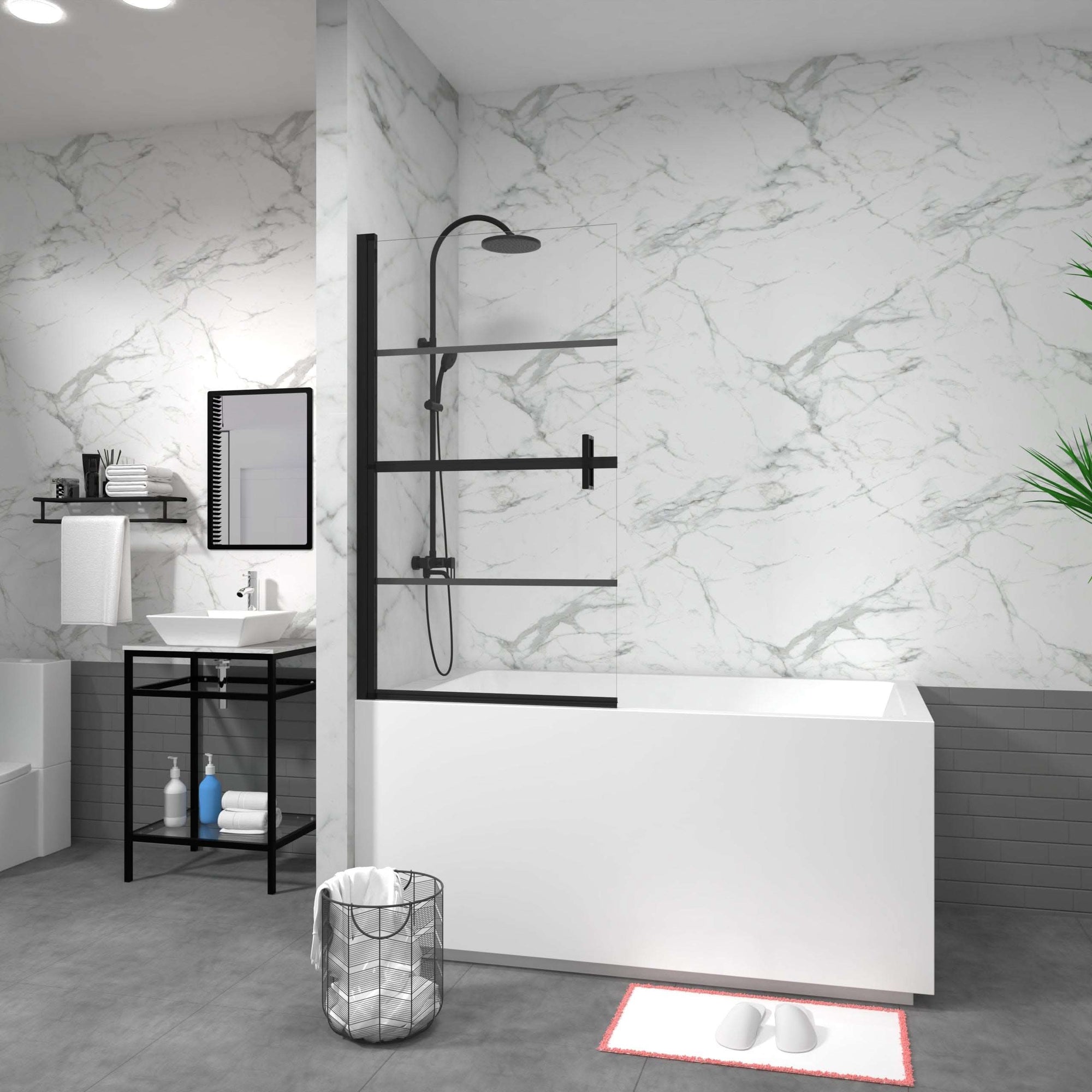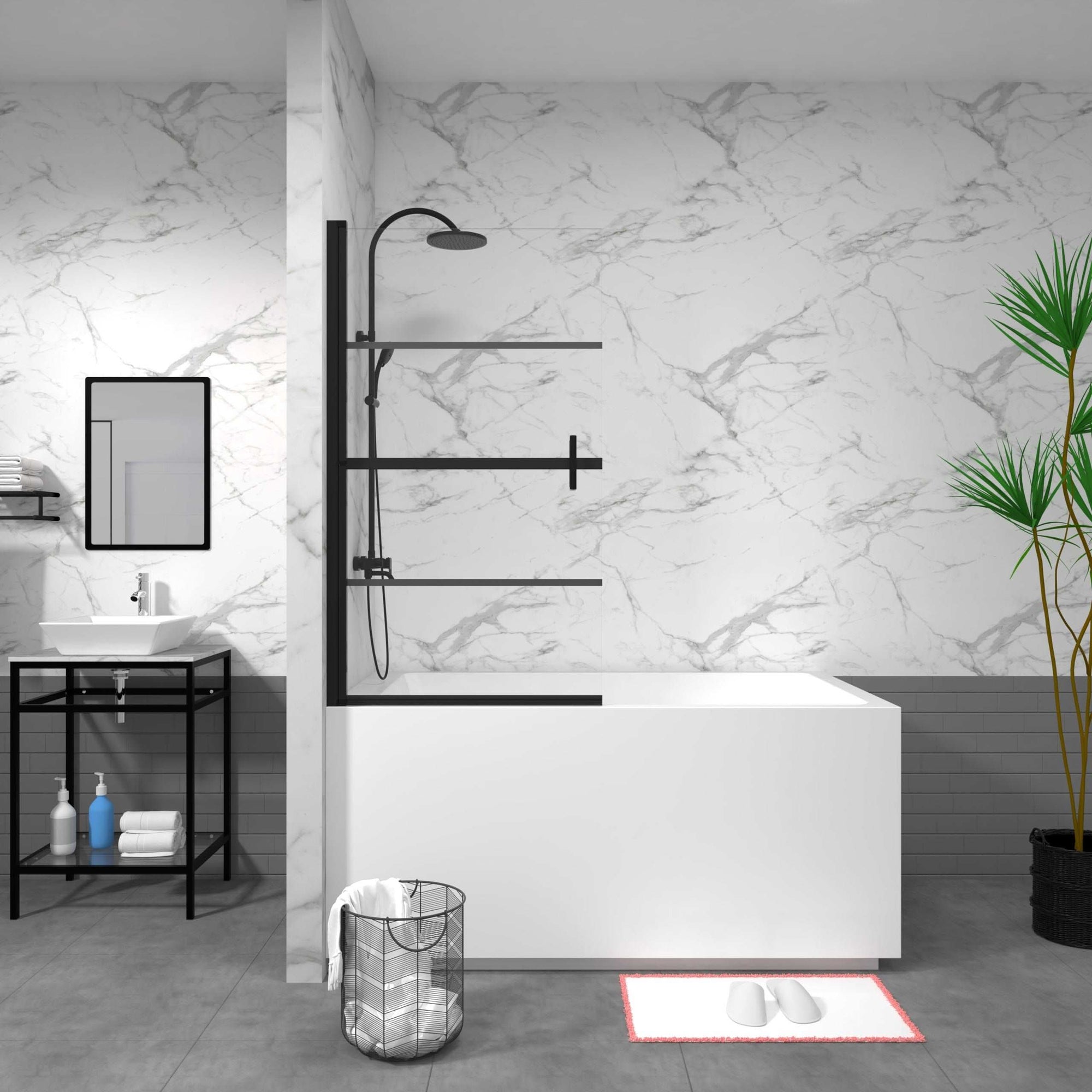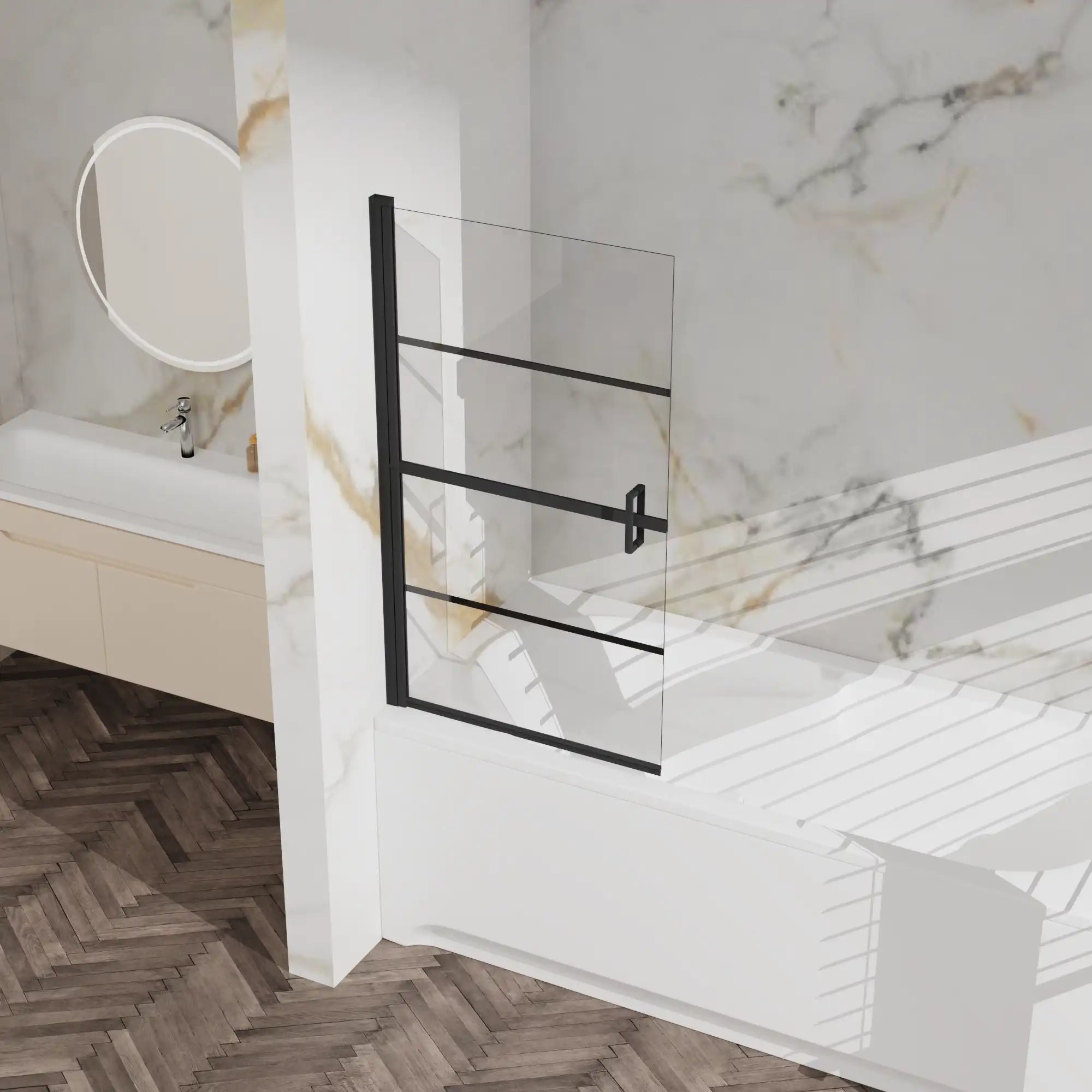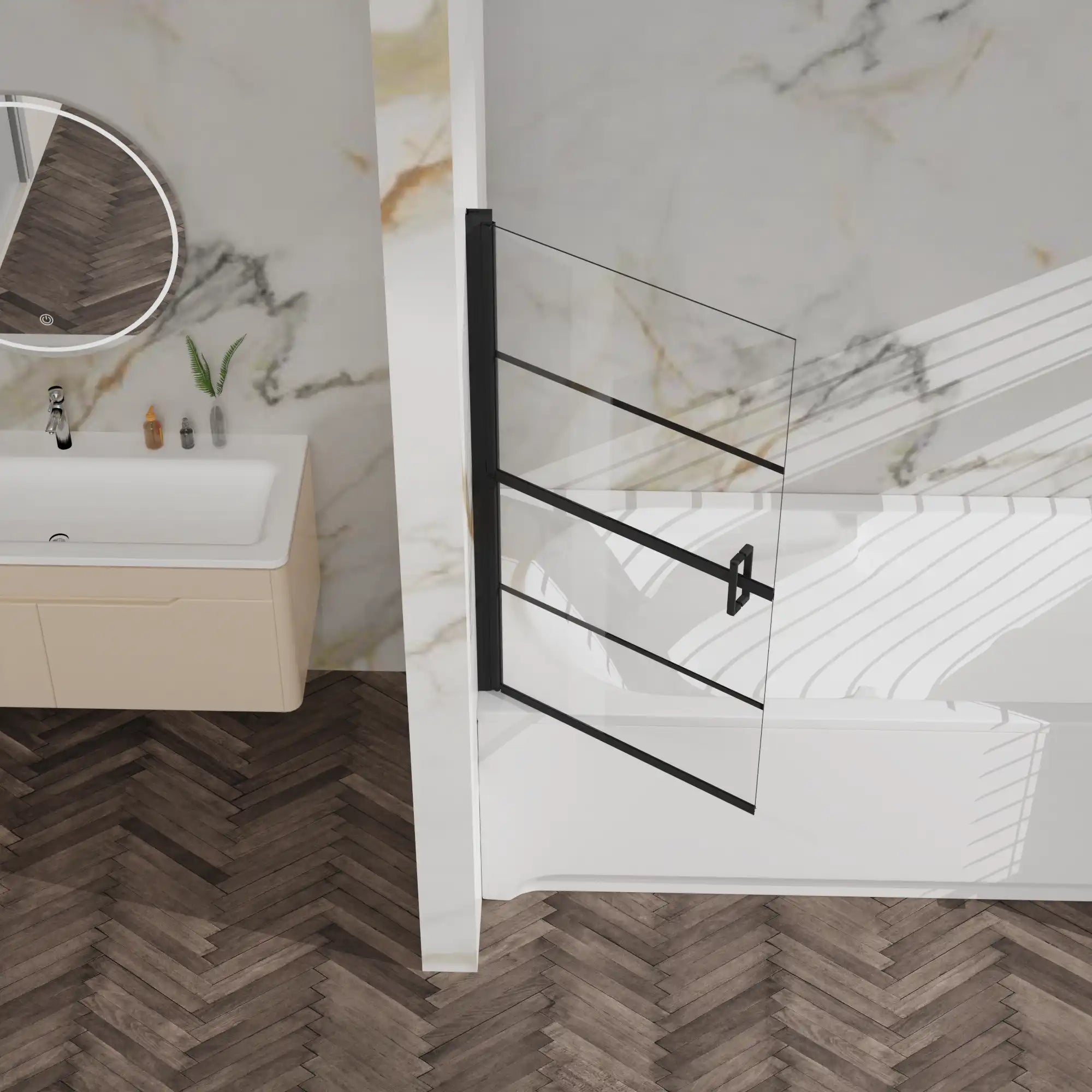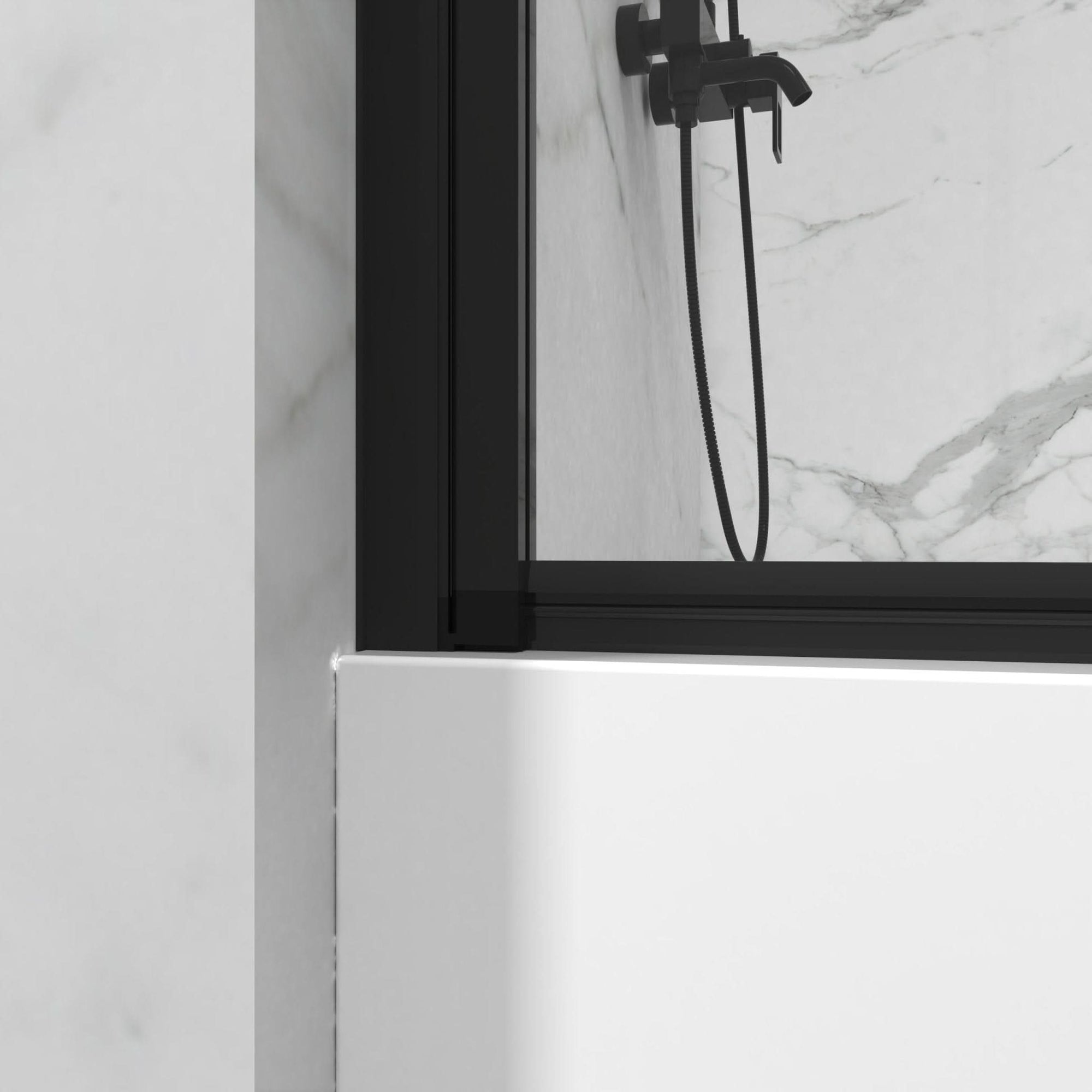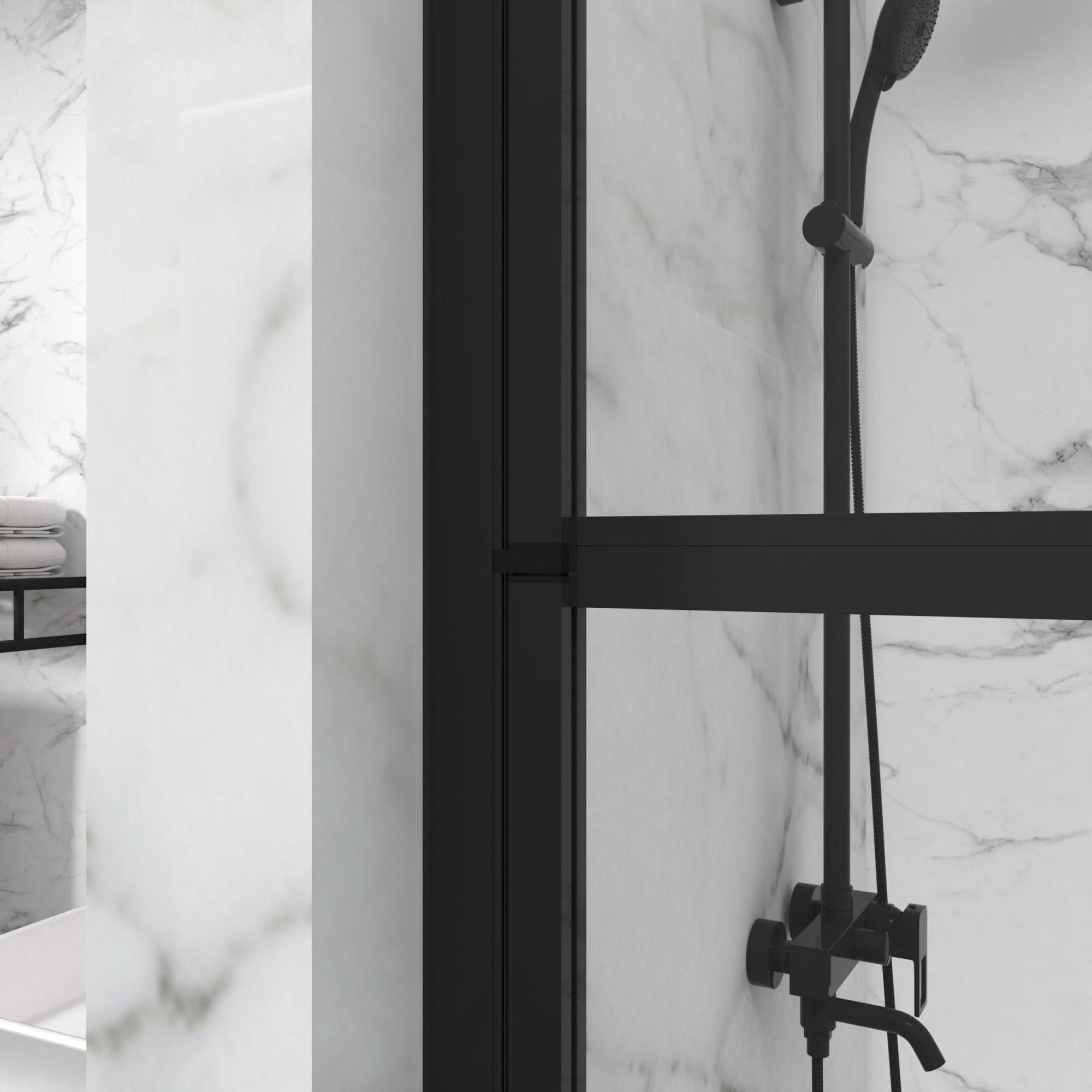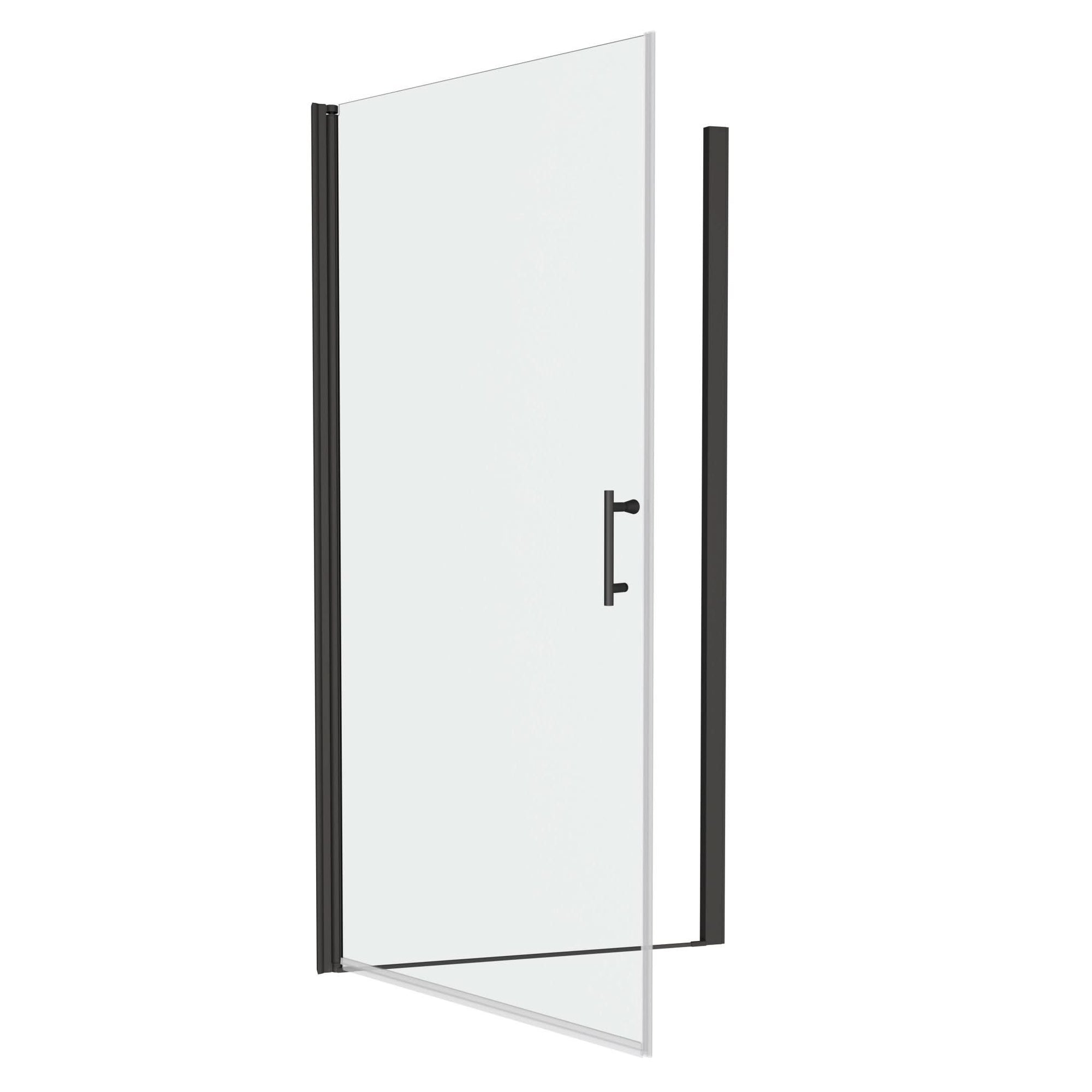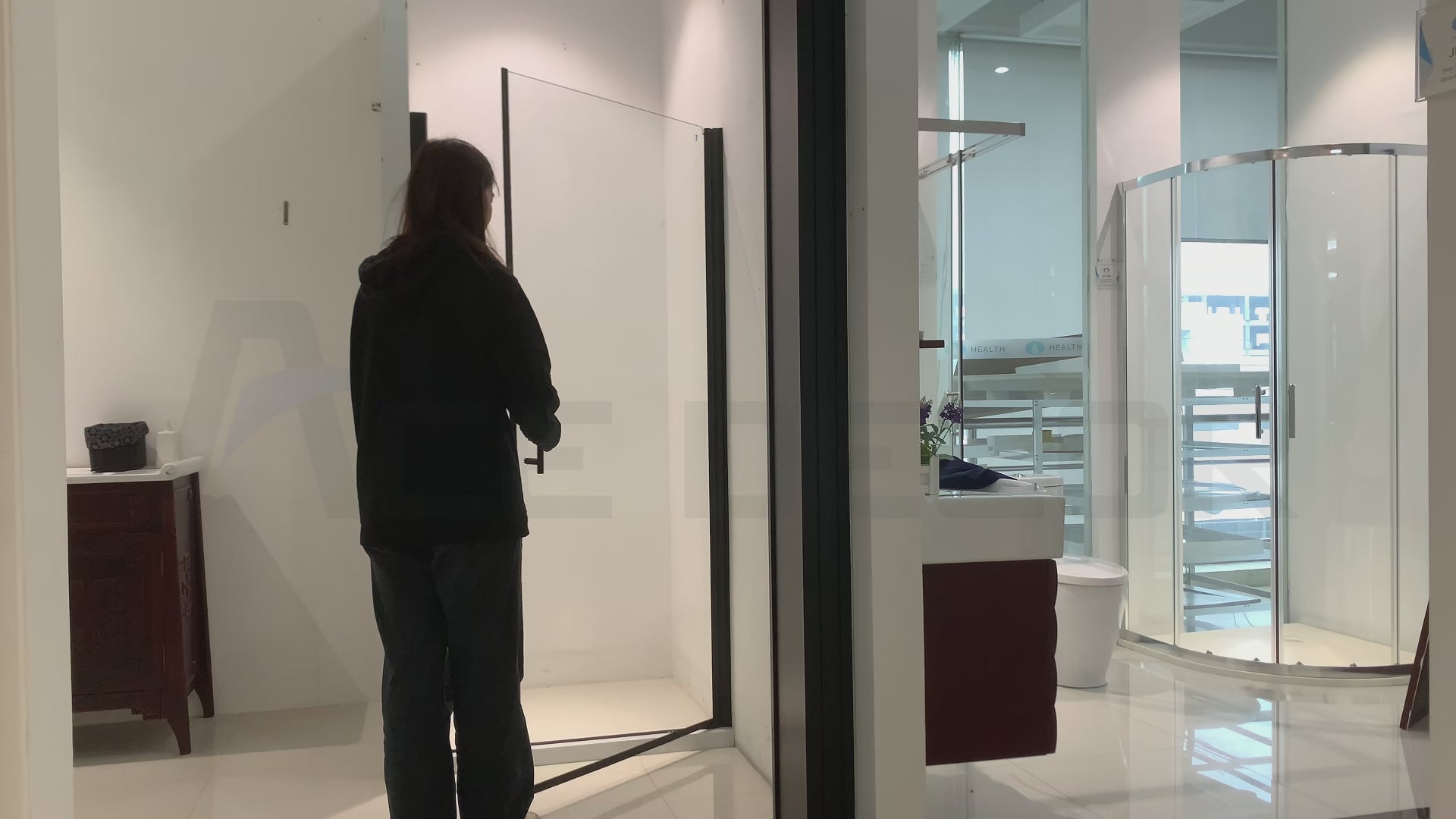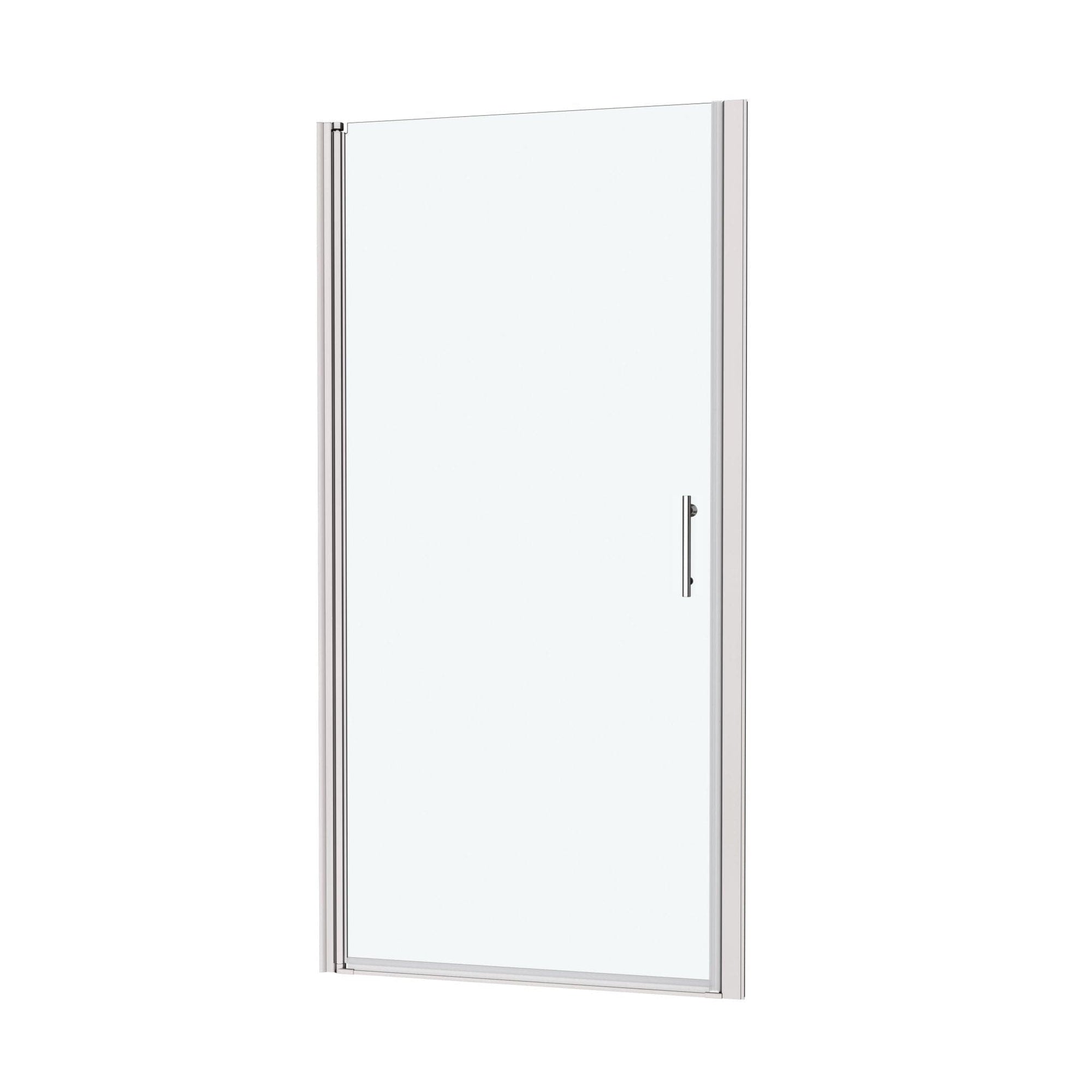Introduction
Choosing the right shower door isn’t just about style, it directly affects how your bathroom feels, functions, and lasts over time. Among modern options, hinged and pivot shower doors dominate the market for their clean frameless design and reliable performance. Yet they differ in more than appearance: each operates on a distinct mechanism that influences water control, space clearance, and installation flexibility.
This guide breaks down the real-world differences between hinged and pivot shower doors—how they work, where they fit best, and what to consider before you buy, so you can make a confident, informed choice for your next remodel.
Table of Contents:
- What Is a Hinged Shower Door?
- What Is a Pivot Shower Door?
- Hinged vs Pivot: Key Differences at a Glance
- How to Choose: Quick Decision Guide
- Common Mistakes Homeowners Make
- FAQ
- Related Articles
1. What Is a Hinged Shower Door?
A hinged shower door—also known as a swing shower door—opens on one side using fixed metal hinges attached to the wall or an adjacent glass panel. The door swings outward (or in both directions with dual-action hinges), creating a wide, unobstructed entry that feels solid and substantial. This mechanism is popular in frameless and semi-frameless designs, where clean lines and open visibility define a contemporary aesthetic.
How It Works
Hinged shower doors are most commonly supported by stainless steel or brass hinges designed to support the entire weight of 8–10 mm tempered glass. It can keep moving smoothly for many thousands of cycles—perfect for long-lasting systems. Most models feature magnetic seals or clear vinyl strips along the edges to help with water-tightness, a place where hinges tend to perform better than sliding or pivot doors.
Why People Love It
Hinged doors are favored for their solid, reliable feel and superior sealing. They suit alcove and corner layouts where there’s adequate clearance in front of the shower. Designers appreciate their frameless minimalist appeal, which can visually enlarge smaller bathrooms. According to market data, hinged configurations continue to be one of the preferred options for custom and luxury remodels due to their ideal performance and long-term durability.
Drawbacks to Know
Over time, hinges can loosen or sag slightly under the constant pull of gravity, especially in heavy-glass setups if not adjusted periodically. Routine maintenance—tightening hinge screws and checking alignment—is necessary to preserve smooth operation and prevent minor leaks. From a design standpoint, some homeowners consider hinged doors too conventional, especially compared with the sleek, architectural look of pivot or sliding systems. Space clearance is another practical limitation: a swing radius of at least 30–36 inches (76–90 cm) is typically required.
Typical Cost Range
Hinged shower doors vary widely in price because they’re often part of custom installations—costs depend on glass size, thickness, and hinge quality. For standard, ready-made models, expect a price range of $400–$900 for frameless or semi-frameless designs using 8 mm glass and stainless hardware. Custom-built or oversized versions can exceed $1,500, with installation adding approximately $200–$400, depending on wall conditions and alignment requirements.

2. What Is a Pivot Shower Door?
A pivot shower door operates on top and bottom pivot pins that allow the glass to rotate on a fixed vertical axis. Unlike side-hinged doors that attach fully to the wall, the pivot point may be positioned at the wall edge or a few inches inward—a design choice that changes how the door moves and how much space it occupies. This system gives the door a refined, architectural character, often seen in high-end frameless enclosures.
How It Works
Unlike the anchors on the wall, pivot mechanism transfers the door weight straight to the floor bracket and top pivot. This vertical-load-bearing method also enables significantly heavier and taller glass panels while ensuring smooth, stable travel.
-
In offset-pivot designs, the pivot pin is placed slightly away from the wall (usually 2–4 inches), so part of the glass swings inward and part outward. This configuration reduces the door’s external swing radius and gives a distinctive floating appearance.
-
In wall-mounted pivot systems, the pivot aligns closely with the wall—functionally similar to a hinge door—but with a minimalist look and reduced frame visibility.
High-quality pivot hardware often includes self-centering or soft-closing features, ensuring the door returns gently to its closed position and maintains watertight alignment over time.
Pros & Cons
Pros
-
Modern, sculptural look: Clean geometry and minimal hardware create a contemporary aesthetic.
-
Efficient use of space: Offset pivots reduce outward swing clearance while maintaining comfortable access.
-
Strong load-bearing design: Weight transfers to the floor, allowing use of large glass panels without wall stress.
-
Smooth, balanced motion: Well-calibrated pivots offer a controlled, weightless feel in operation.
Cons
-
Water containment: The small gap near the pivot point makes sealing slightly less effective than full-hinged systems.
-
Precision installation required: Floor and ceiling pivots must be perfectly aligned to prevent uneven swing or binding.
-
Maintenance: Floor-mounted hardware can accumulate debris or mineral deposits if not cleaned regularly.
Budget Snapshot
Frameless models using 8–10 mm tempered glass and stainless hardware are generally between $500–$1,000 for pivot shower doors. Systems can be designer-grade with offset pivots, dampened closing or even oversized panels for $1,500+. Prices for installation generally range from $250–$500, depending on how precise an alignment and waterproofing is needed for it to work properly.

When comparing hinged and pivot shower doors, the main differences come down to structure, clearance, sealing performance, and design flexibility. Both deliver a premium frameless look, but their mechanical principles suit different bathroom layouts and user priorities.
| Feature | Hinged Shower Door | Pivot Shower Door |
|---|---|---|
| Rotation Axis | Mounted on the side, attached to the wall or fixed panel | Mounted top and bottom; axis can be at the wall or offset inward |
| Opening Direction | Typically swings outward (sometimes both ways with dual hinges) | Usually single-direction; offset designs may swing both ways slightly |
| Clearance Requirement | Requires full swing space in front (30–36 in / 76–90 cm) | Reduced outward clearance, especially with offset pivots |
| Walk-through Width | Full width of glass panel | Slightly reduced in center-pivot models; full width in wall-mounted versions |
| Sealing & Water Control | Excellent—continuous magnetic or vinyl seals along edges | Improved in modern models with magnetic seals & lift-lower pivots; slightly weaker at axis area |
| Installation Tolerance | Moderate; wall alignment more forgiving | High precision needed—pivot points must be perfectly vertical |
| Durability | Stable and proven; hinges may loosen over years of use | Long lifespan; pivots distribute load vertically for heavy panels |
| Aesthetic Profile | Classic swing-door look | Sleek, architectural, and minimal; creates a “floating” impression |
| Maintenance | Occasional hinge tightening | Clean floor pivot and check alignment periodically |
| Best For | Alcove or small corner showers with enough swing clearance | Modern layouts or larger showers where design and spatial flow matter |
Expert Insight
From a performance standpoint, hinged doors still lead in tight water sealing and ease of maintenance. However, pivot systems have caught up fast—especially those with magnetic edge seals and lift-and-drop mechanisms, which now achieve near-parity in water retention.
4. How to Choose: Quick Decision Guide
Choosing whether to go for a hinged or a pivot shower door is less about which style you prefer and more about how our bathroom space, its users and priorities match. This section serves as a quick, yet pragmatic, framework to help you in making your decision.
Room Size & Layout
-
Compact Bathrooms (Under 45 sq. ft / 4 m²): Space clearance becomes the deciding factor. If the door might hit a vanity, wall, or toilet, a pivot design with an offset axis offers the same elegance while saving valuable swing area.
-
Mid-to-Large Bathrooms: You can freely choose either. A hinged door gives stronger water containment and a more defined boundary, while a center-pivot door opens up the space visually for a lighter, gallery-style feel.
-
Corner or Recessed Showers: Hinged doors tend to fit better when one wall is load-bearing or tiled for hinge mounting. Pivot systems require firm floor anchoring and clearance on both sides of the glass.
Who Uses the Shower Most
-
Families and Seniors: Choose a hinged door for its predictable, one-direction motion and tighter seal—less splashing means safer, drier floors.
-
Design Enthusiasts or Couples: A pivot door offers a distinctive, designer-grade feel with smoother operation and a minimalist appearance.
-
Frequent Daily Use:
One-Minute Decision Tree
Answer three quick questions to pick between a Hinged or Pivot shower door.
-
Step 1 Do you have at least 30 inches (76 cm) of open space in front of the shower?Yes → HingedNo → Pivot (offset design recommended)
-
Step 2 Is water containment your top priority?Yes → Hinged (full magnetic seals)No → Pivot (modern look & easier access)
-
Step 3 Do you prefer a minimalist, frameless look with smooth motion?Yes → PivotNo / Unsure → Hinged (traditional & consistent)
Even after thorough research, it’s easy to choose the wrong shower door. Showrooms rarely reflect how doors behave in real bathrooms, so many homeowners only discover issues months—or years—after installation. Here are the most common pitfalls to avoid.
1. Overlooking Resale Value
In the U.S., bathroom design directly affects home appraisal. Buyers tend to prefer frameless hinged doors, which feel timeless and “classic.” Pivot doors—especially inward-swinging models—can appear unconventional or impractical to future buyers. If you plan to sell within a few years, consider how your choice might be perceived in the next owner’s eyes.
2. Ignoring Building Codes & Accessibility
Many states mandate outward-swinging shower doors for safety. A gorgeous pivot door that swings inward will likely not pass a local code or an insurance inspection. If using for aging-in-place / ADA compliance, ensure the door is wide enough to accommodate mobility devices and entry/exit.
3. Forgetting Real-World Comfort
On cold mornings, steam retention becomes a comfort issue. Pivot doors often leave a small gap near the top or bottom, allowing heat to escape. Hinged doors, with continuous magnetic seals, retain warmth more effectively—something you won’t notice in a showroom but will appreciate every day.
4. Overlooking Daily Usability
Families often face practical issues. A hinged door can bump into someone passing by; a pivot’s floor pin can collect soap scum or even stub toes. These aren’t deal breakers, but small annoyances can add up with daily use—especially in shared bathrooms.
5. Underestimating Long-Term Maintenance
Every system has upkeep:
-
Hinged doors require seal replacements every few years.
-
Pivot doors handle heavier glass but need professional service if the pivot pin wears out.
-
Thicker glass (½ inch)

Q1. Which is better for small U.S. bathrooms—pivot or hinged?
Q2. Do pivot doors really leak more than hinged doors?
Q3. What glass thickness should you choose in the U.S. market?
Q4. Is DIY installation realistic, or should you hire a pro?
7. Related Articles
Looking to dive deeper? Here are some related articles that will help you compare options and make a more confident choice for your next shower upgrade.
- "15+ Types of Shower Doors Explained: Pros, Cons & Best Fit for Your Bathroom"
- "What Are Standard Glass Shower Door Sizes and How to Choose the Right One?"
- "Glass Doors Too Fragile to Ship? We Put Our "Replacement Guarantee" Right in the Manual"
- "Not Just an Ordinary Door: A Guarantee of Safe Use 1,000 Times a Day"
- "How to Tell If a Shower Glass Panel Is Truly Safe? Look for These 3 Crucial Details"
- "The Outer Rollers Are Not Only Attractive But Also Offer Many "Hidden Advantages""


